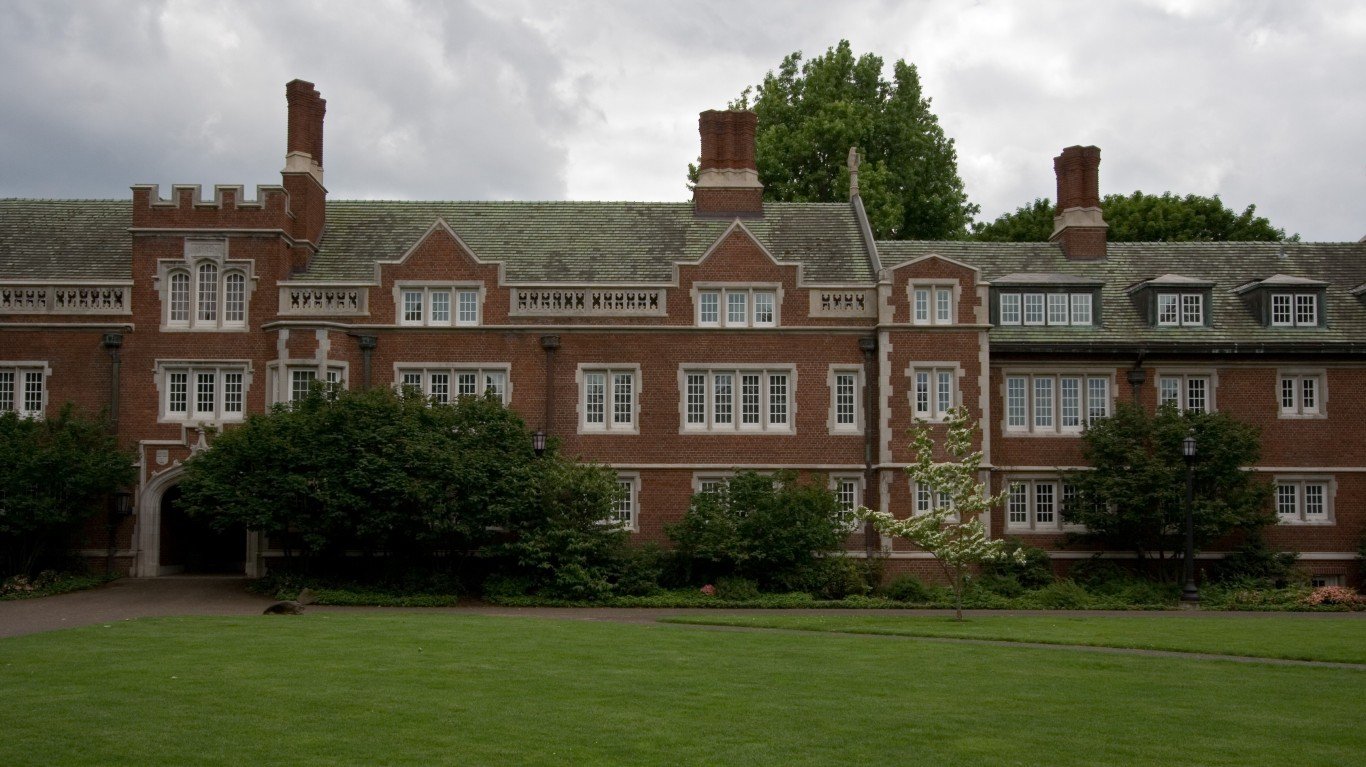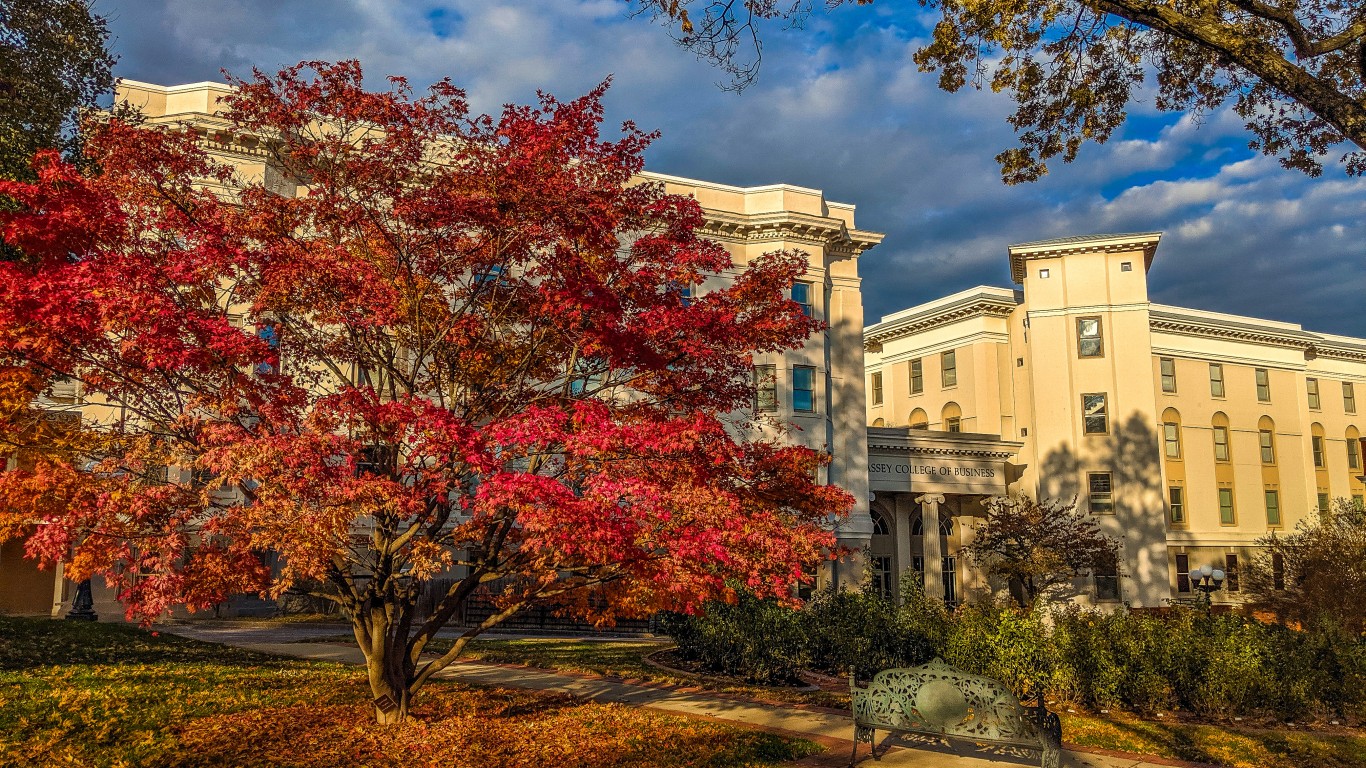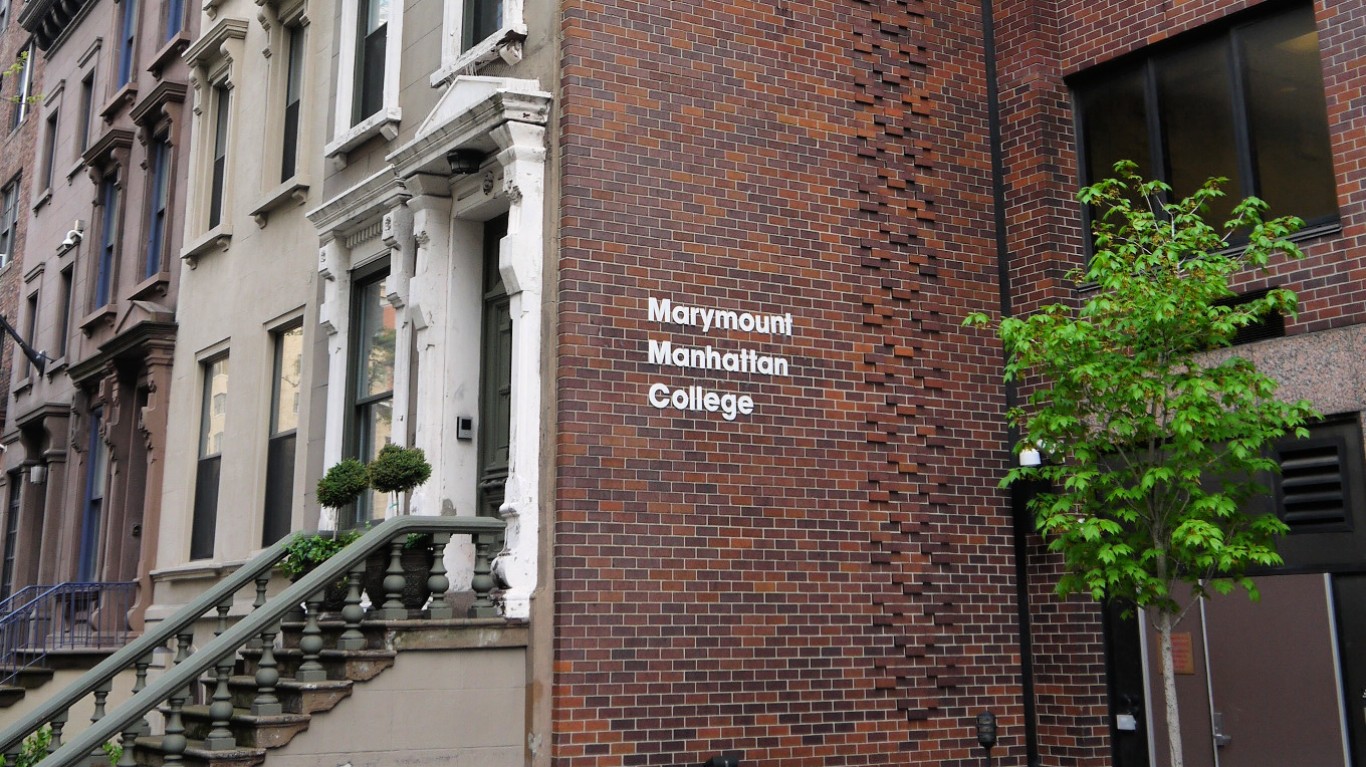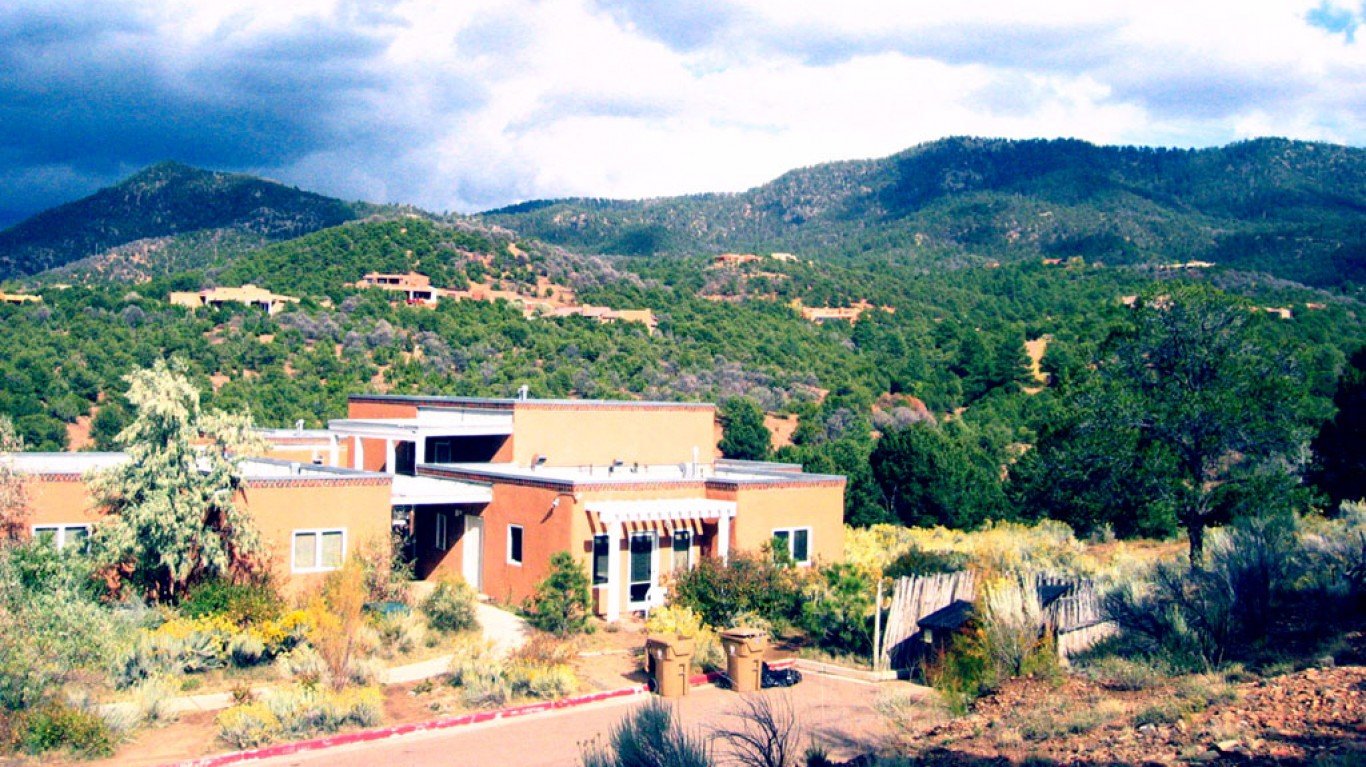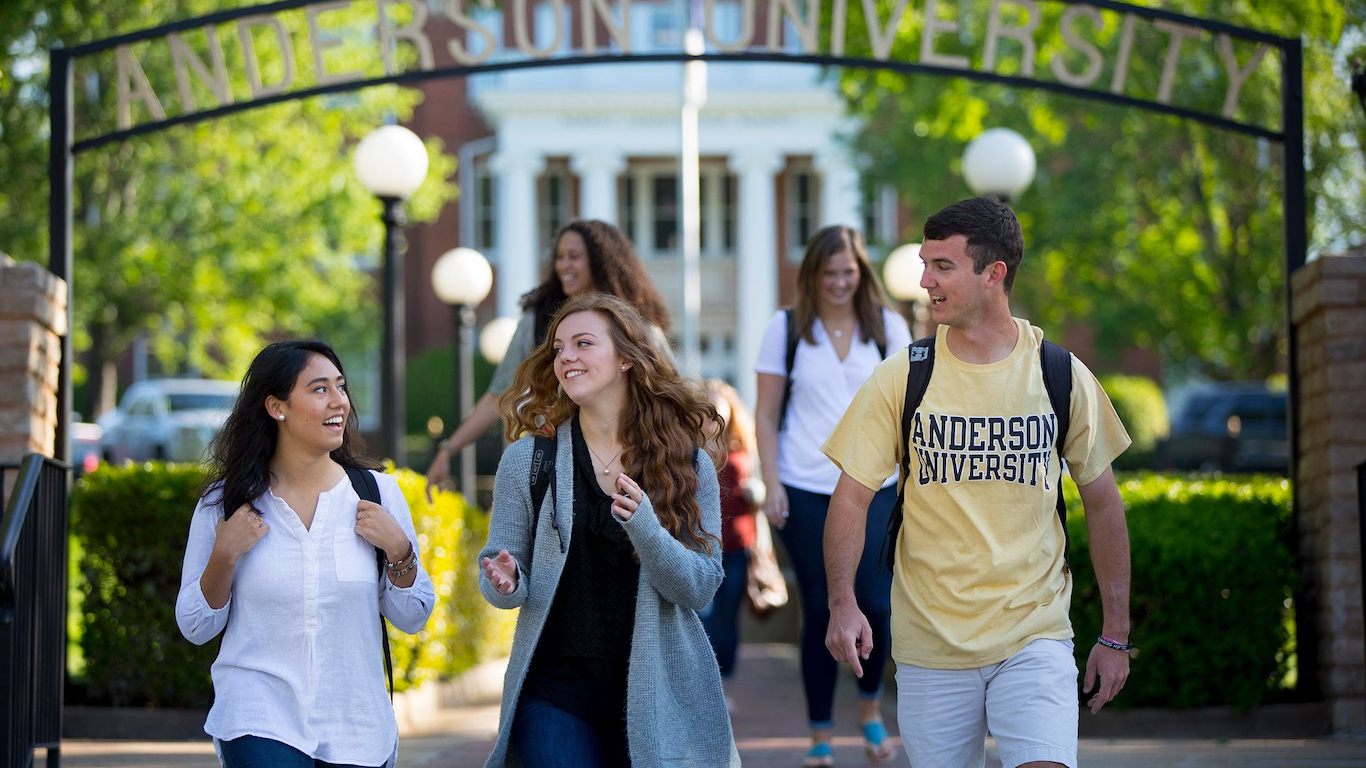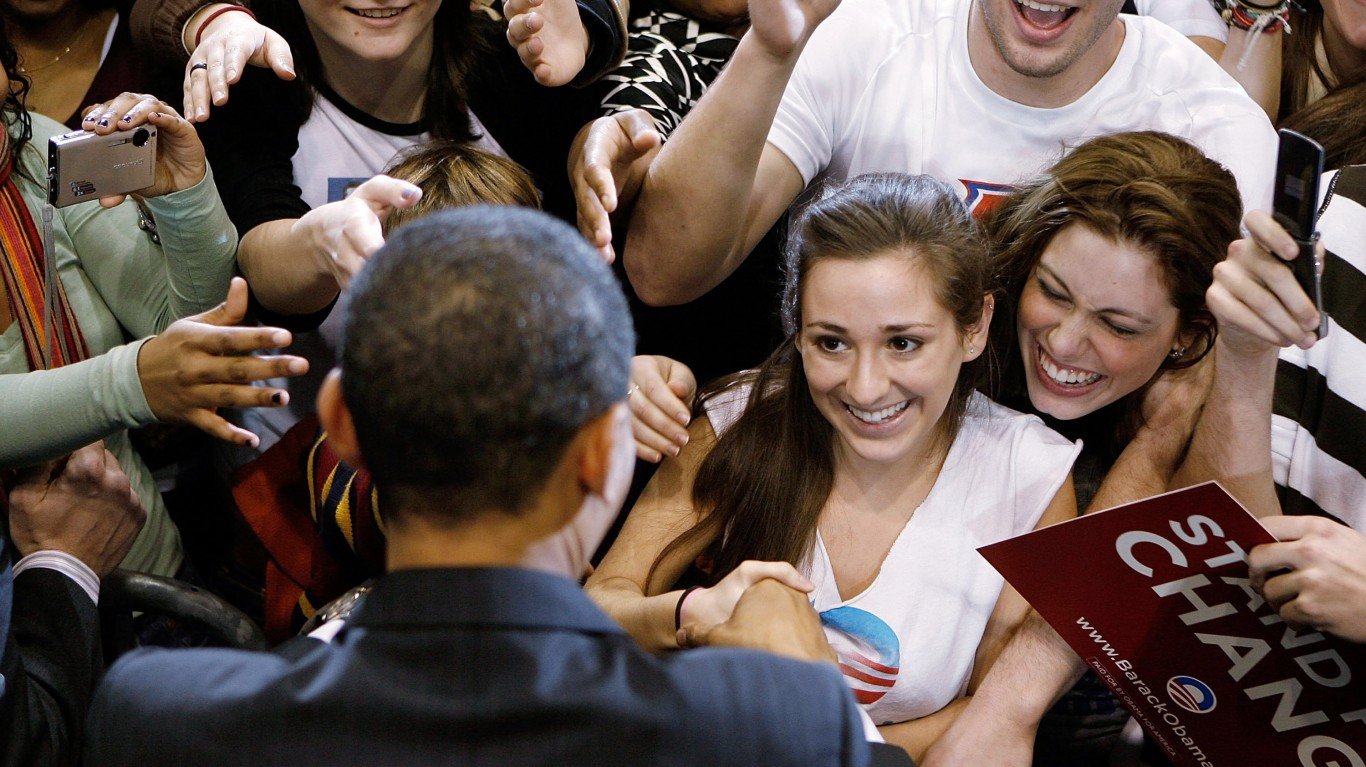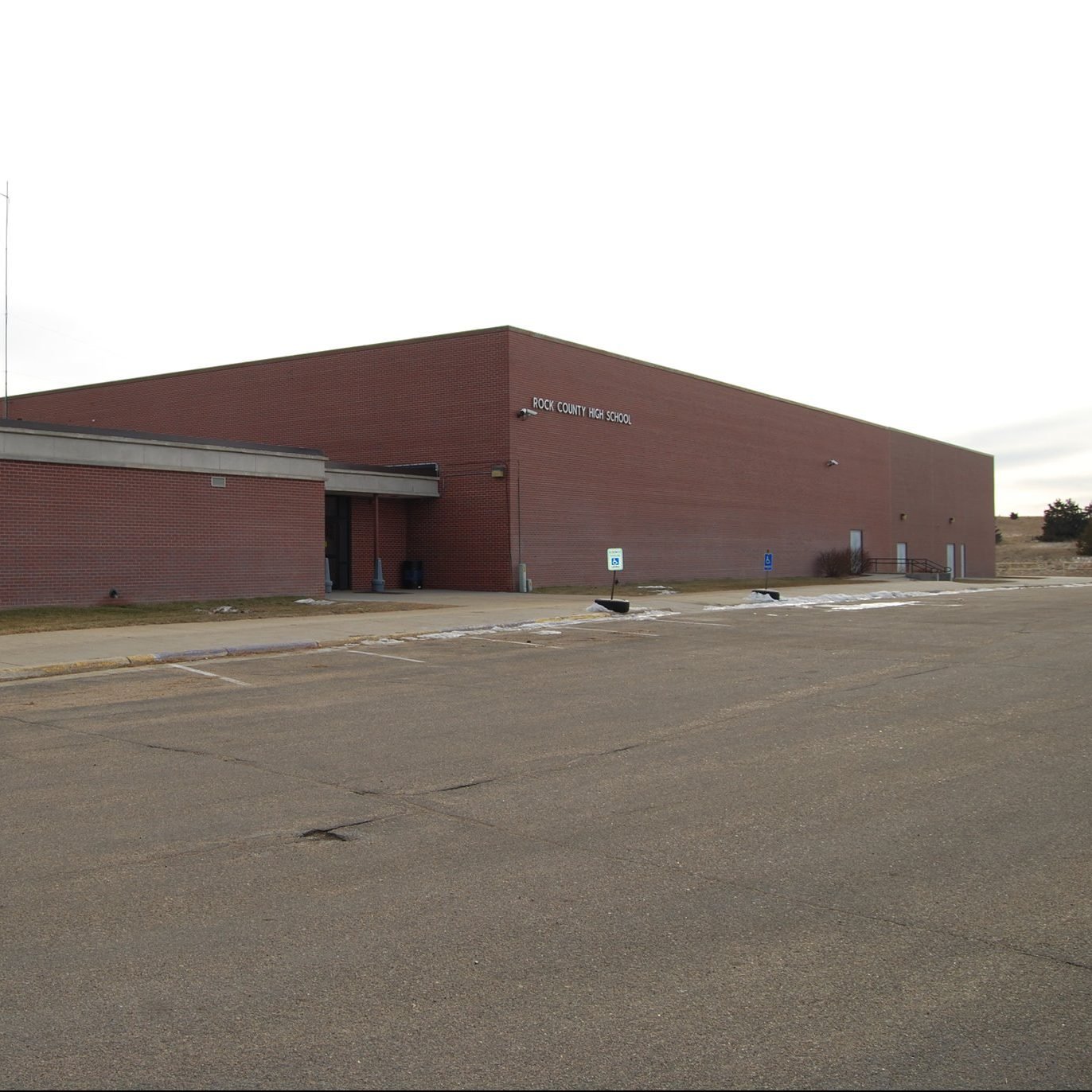

According to a report recently updated by the National Student Clearinghouse Research Center, freshmen college enrollment in the United States this fall is believed to be 13% lower compared to the previous year. The decline is likely largely due to the heightened health risk caused by the COVID-19 pandemic as well as the hesitancy among some Americans to spend tens of thousands of dollars on their education during this time of economic uncertainty. College is an investment, and those with a degree are statistically more likely to earn higher salaries over their lifetimes than those without one. But depending on which school students graduate from, the return on investment varies substantially.
24/7 Wall St. reviewed median earnings, 10 years after enrollment, of former students who received federal financial aid while attending school as a percentage of the average annual cost of attending their institution, net any grant money received. We listed the 50 schools that were ranked among the U.S. News & World Report 2020 National Universities and National Liberal Arts Colleges that had the lowest return on investment.
At some of the nation’s top-ranked colleges and universities, the typical graduate earns a median income many times the average annual net price of attendance. In the 50 schools on this list, however, annual earnings among graduates range from less than 60% higher than annual cost to, in a few cases, even less than the annual net price. Net price and earnings data by institution came from the U.S. Department of Education’s Integrated Postsecondary Education Data System.
The average annual published cost of attending a private nonprofit four-year institution for the 2019-2020 school year in the United States is a little under $50,000, nearly 20% higher than it was just a decade prior. That figure represents the total amount paid, however, and the vast majority of students (nearly 90%) at private nonprofit schools receive grants or other financial aid. Even after accounting for that aid, however, students receiving financial aid must still on average cover $27,370 per year through loans or out of pocket. This is how much college cost the year you were born. Among the schools on this list, the average net price ranges from substantially less, as low as $14,790 in one case, to over $40,000 in several cases. The net price figure represents the cost of tuition and fees, books and supplies, and living expenses minus federal, state, and institutional scholarship aid for all undergraduate students receiving financial aid.
A number of the schools on this list are traditionally referred to as Historically Black Colleges and Universities, or HBCUs. These schools, formed to give greater opportunities to Black Americans who were systematically excluded from a postsecondary education, a chance at a college education. The presence of HBCUs on this list may not be an indictment of the quality or price of these schools, but rather evidence of the persistent inequalities in the U.S. job market. Black Americans with a college education earn substantially less than white Americans with a college education. Here is a look at the extent of racial income inequality in all 50 states.
It is important to note that the earnings used to rank schools for this story are medians and are not representative of what all graduates earn. Earnings after graduation can often depend more on the field of study than the institution itself. These are the highest- and lowest-paying college majors.
Click here to see the 50 top ranked colleges that pay off the least
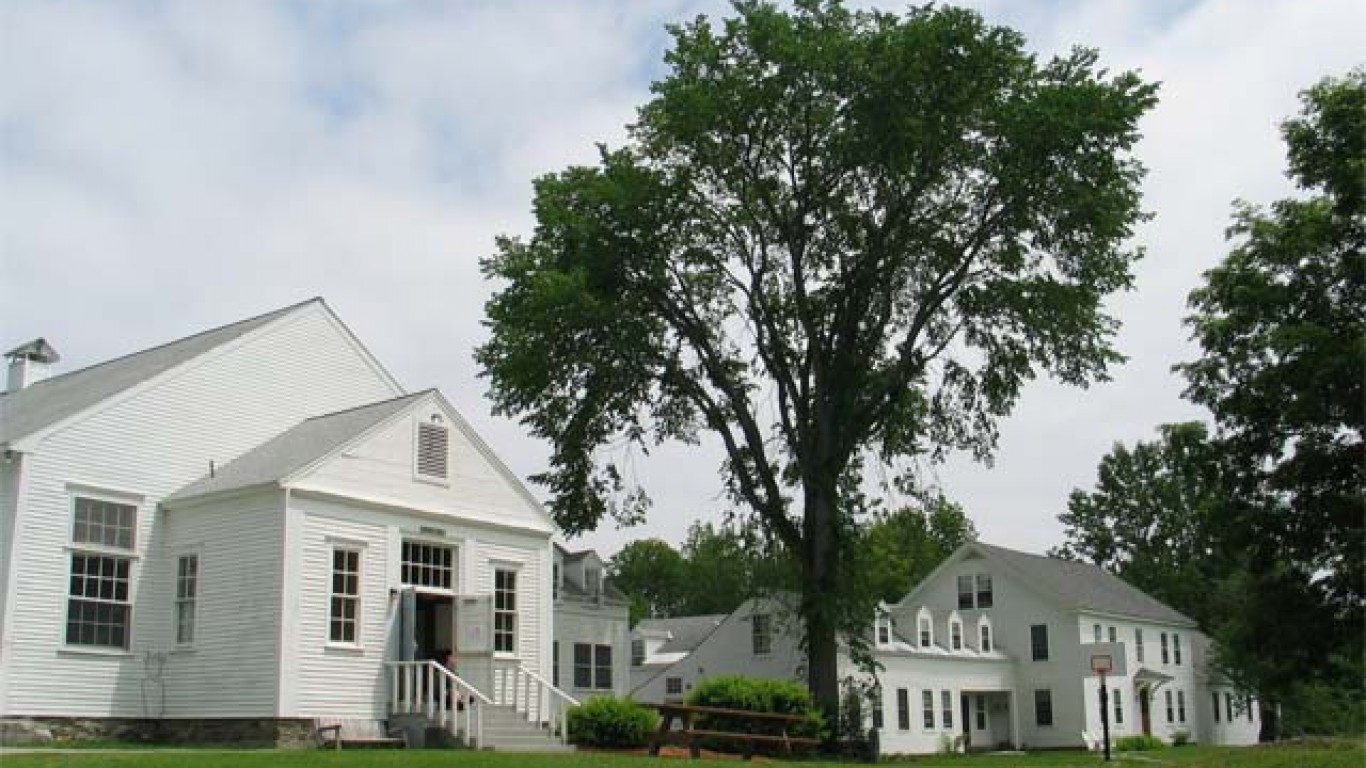
50. Marlboro College
> Avg. annual net price for students receiving grant aid: $17,497
> Median earnings 10 yrs. after entry for students receiving grant aid: $27,600
> Undergraduate students receiving grant aid: 91%
> Location: Marlboro, VT
> Undergraduate enrollment: 154
[in-text-ad]
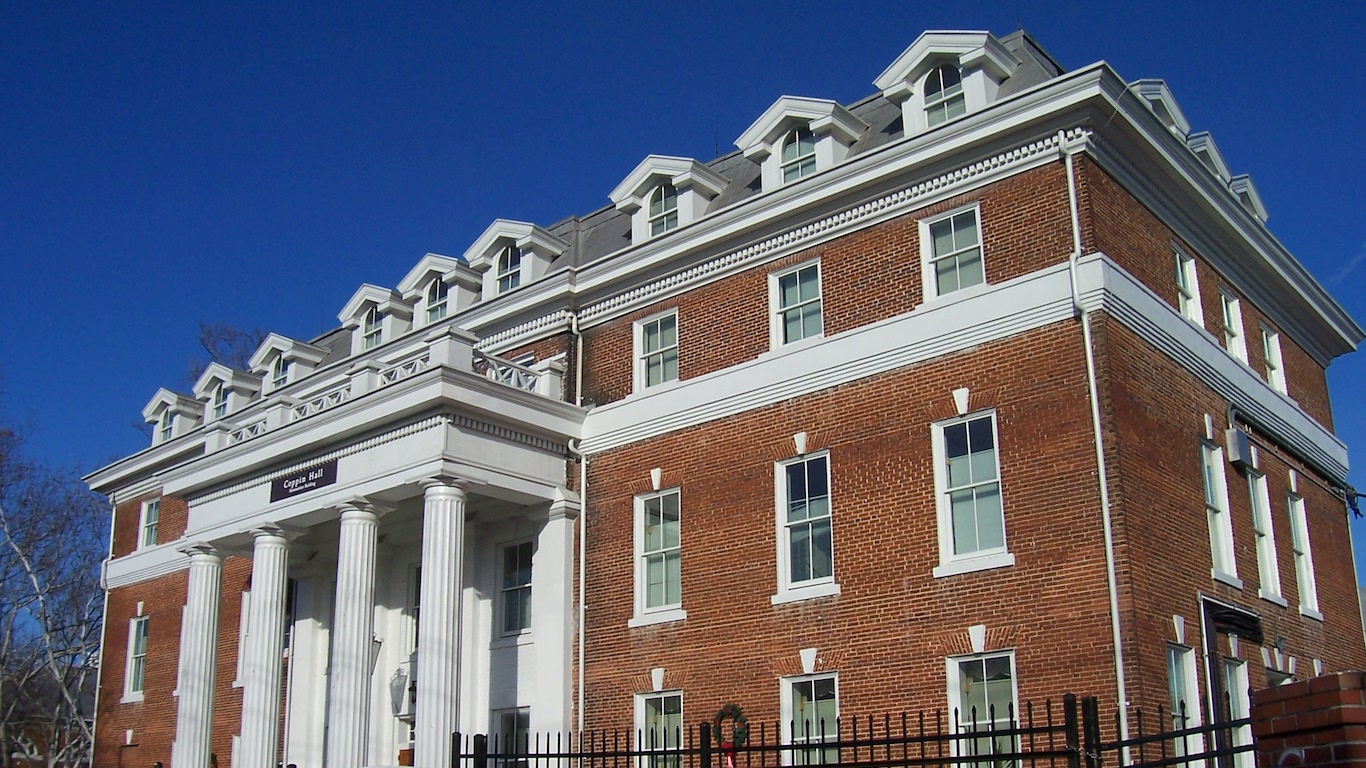
49. Allen University
> Avg. annual net price for students receiving grant aid: $14,790
> Median earnings 10 yrs. after entry for students receiving grant aid: $23,300
> Undergraduate students receiving grant aid: 95%
> Location: Columbia, SC
> Undergraduate enrollment: 754
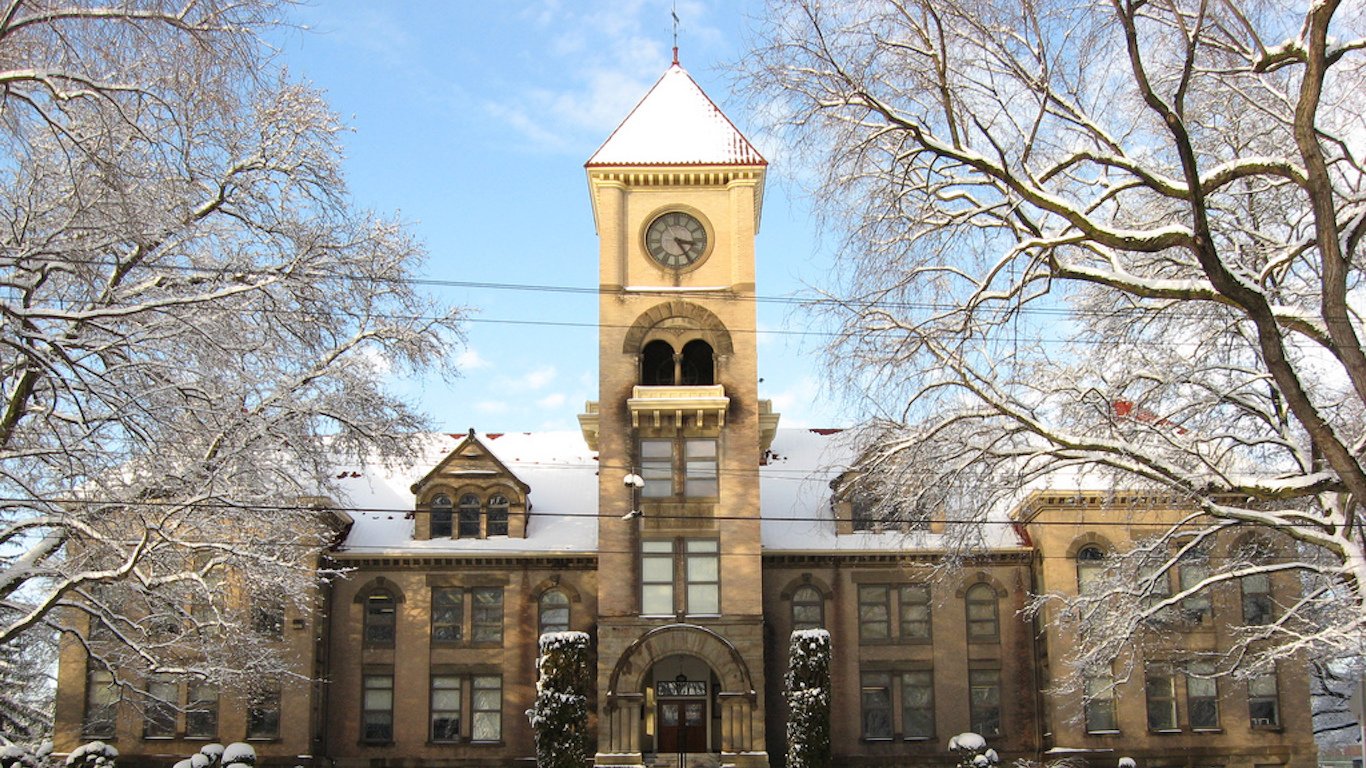
48. Whitman College
> Avg. annual net price for students receiving grant aid: $32,627
> Median earnings 10 yrs. after entry for students receiving grant aid: $51,300
> Undergraduate students receiving grant aid: 76%
> Location: Walla Walla, WA
> Undergraduate enrollment: 1,579
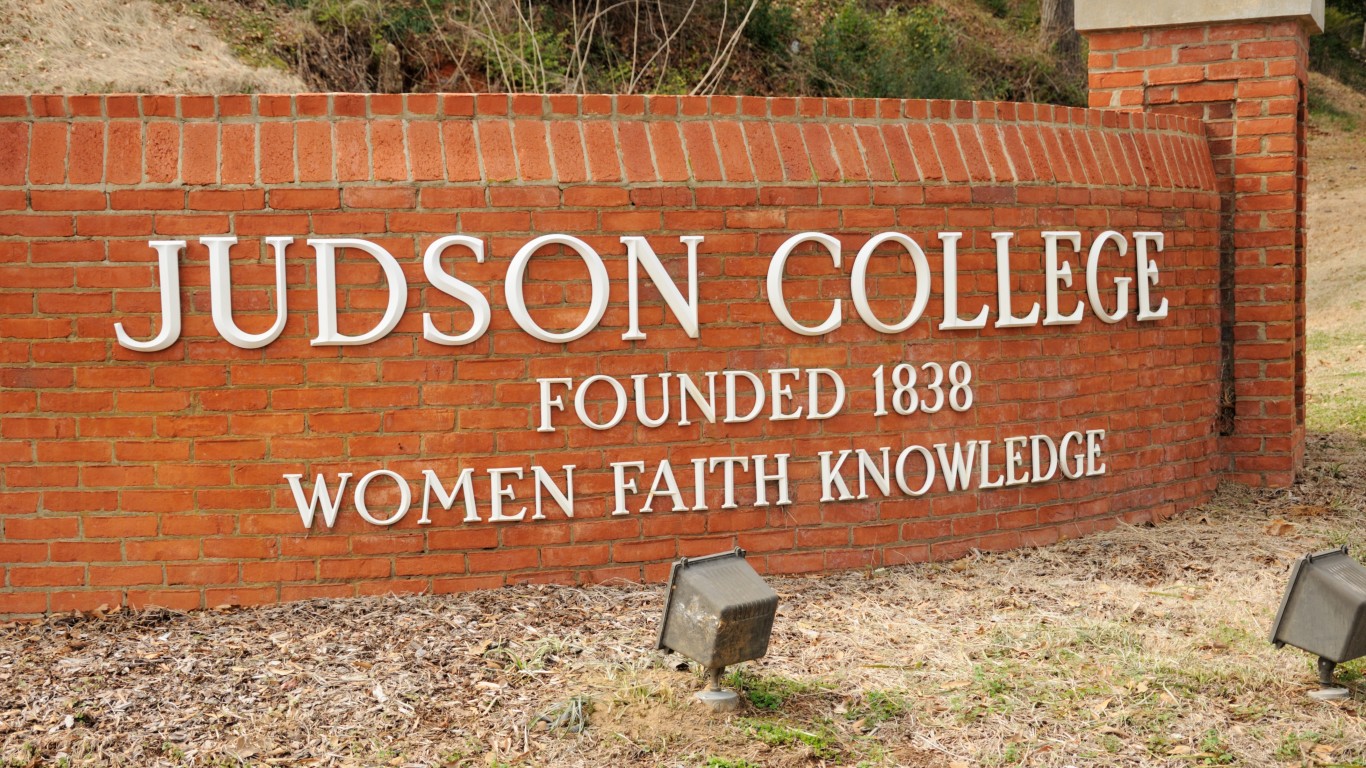
47. Judson College
> Avg. annual net price for students receiving grant aid: $16,619
> Median earnings 10 yrs. after entry for students receiving grant aid: $26,100
> Undergraduate students receiving grant aid: 94%
> Location: Marion, AL
> Undergraduate enrollment: 250
[in-text-ad-2]
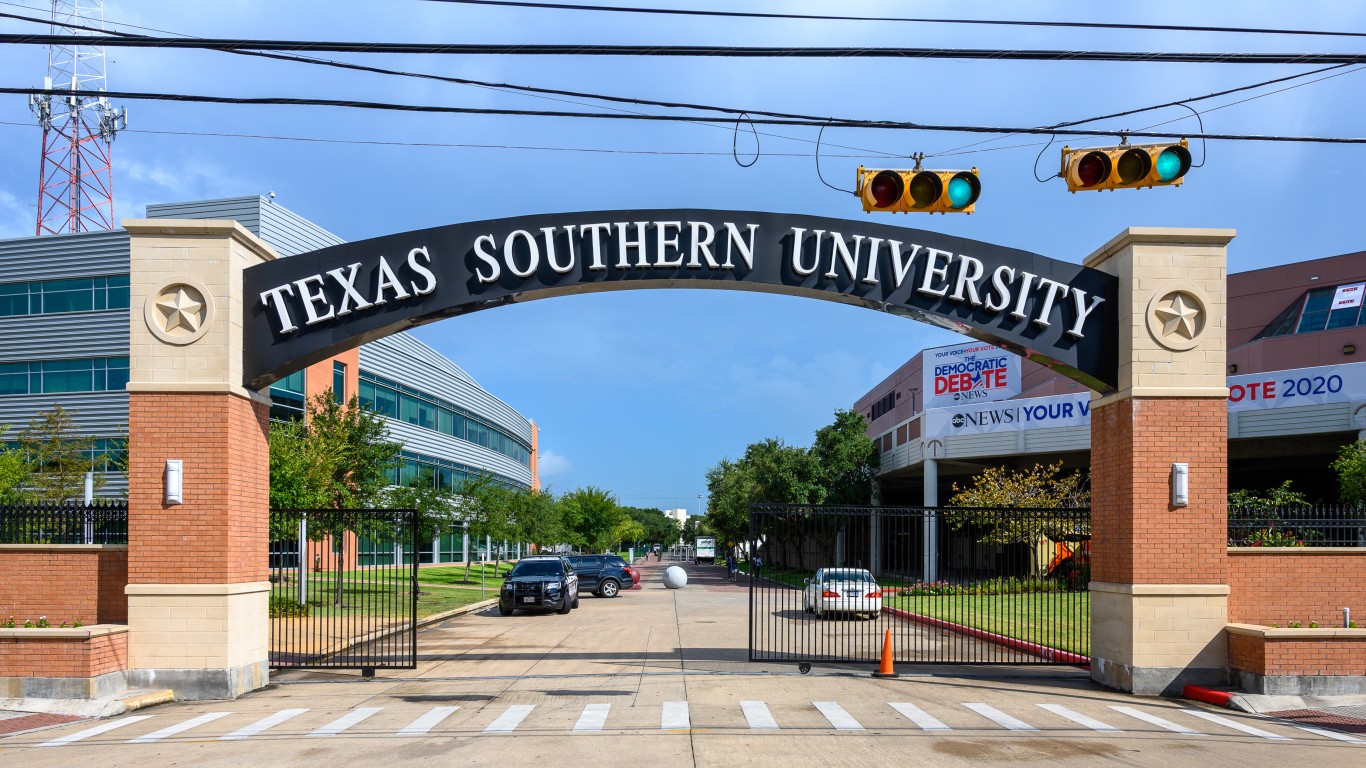
46. Texas Southern University
> Avg. annual net price for students receiving grant aid: $19,950
> Median earnings 10 yrs. after entry for students receiving grant aid: $31,300
> Undergraduate students receiving grant aid: 76%
> Location: Houston, TX
> Undergraduate enrollment: 7,092
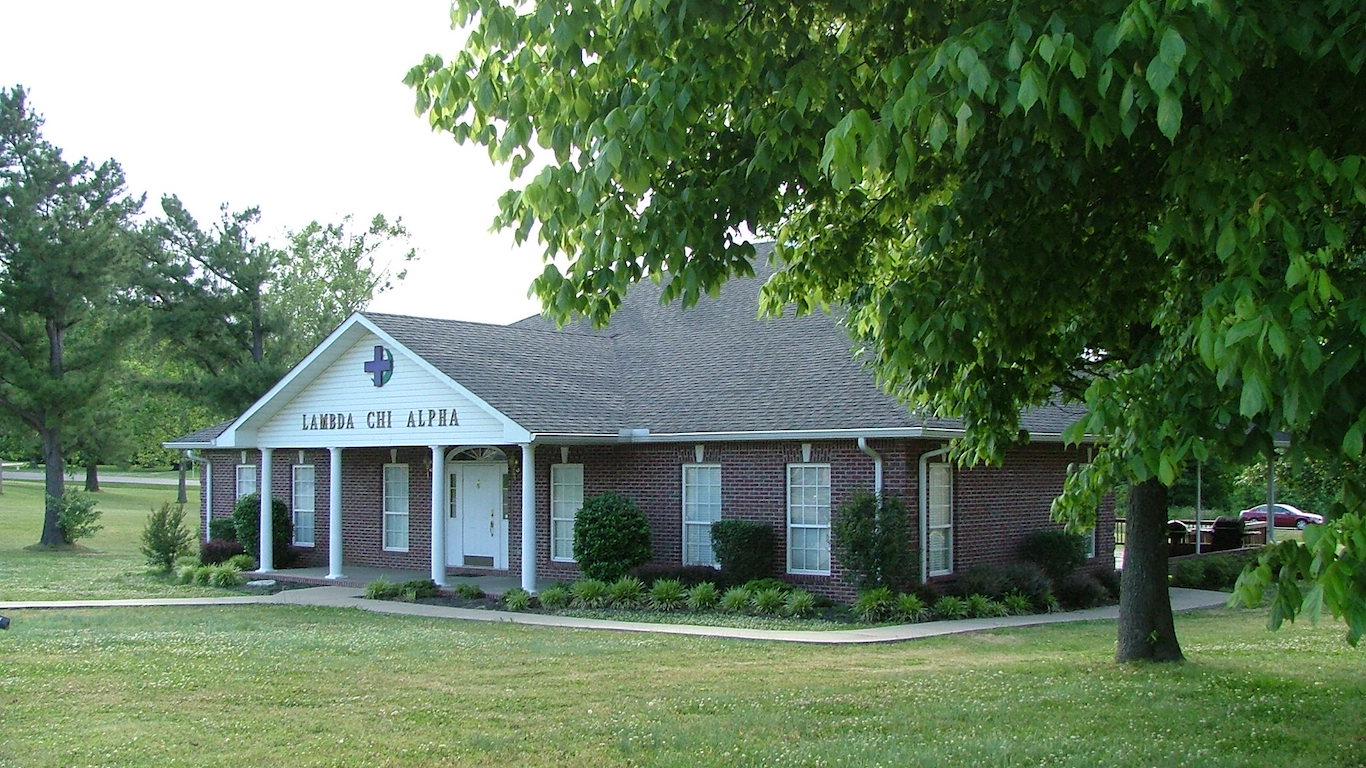
45. Union University
> Avg. annual net price for students receiving grant aid: $27,551
> Median earnings 10 yrs. after entry for students receiving grant aid: $43,200
> Undergraduate students receiving grant aid: 72%
> Location: Jackson, TN
> Undergraduate enrollment: 2,164
[in-text-ad]
44. Hampton University
> Avg. annual net price for students receiving grant aid: $28,568
> Median earnings 10 yrs. after entry for students receiving grant aid: $44,700
> Undergraduate students receiving grant aid: 74%
> Location: Hampton, VA
> Undergraduate enrollment: 3,714
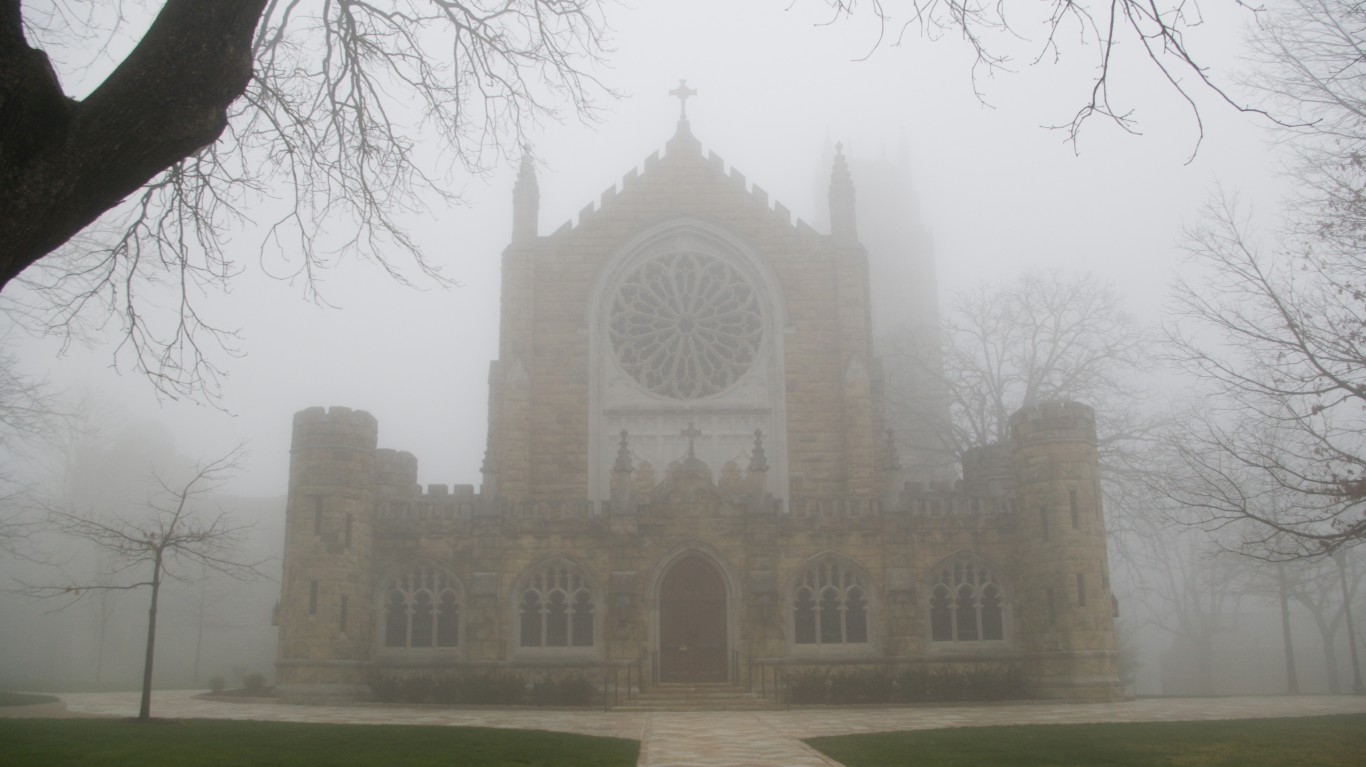
43. The University of the South
> Avg. annual net price for students receiving grant aid: $29,119
> Median earnings 10 yrs. after entry for students receiving grant aid: $45,500
> Undergraduate students receiving grant aid: 87%
> Location: Sewanee, TN
> Undergraduate enrollment: 1,695

42. George Fox University
> Avg. annual net price for students receiving grant aid: $29,119
> Median earnings 10 yrs. after entry for students receiving grant aid: $45,100
> Undergraduate students receiving grant aid: 89%
> Location: Newberg, OR
> Undergraduate enrollment: 2,629
[in-text-ad-2]
41. St. John’s College
> Avg. annual net price for students receiving grant aid: $23,921
> Median earnings 10 yrs. after entry for students receiving grant aid: $36,900
> Undergraduate students receiving grant aid: 99%
> Location: Annapolis, MD
> Undergraduate enrollment: 494
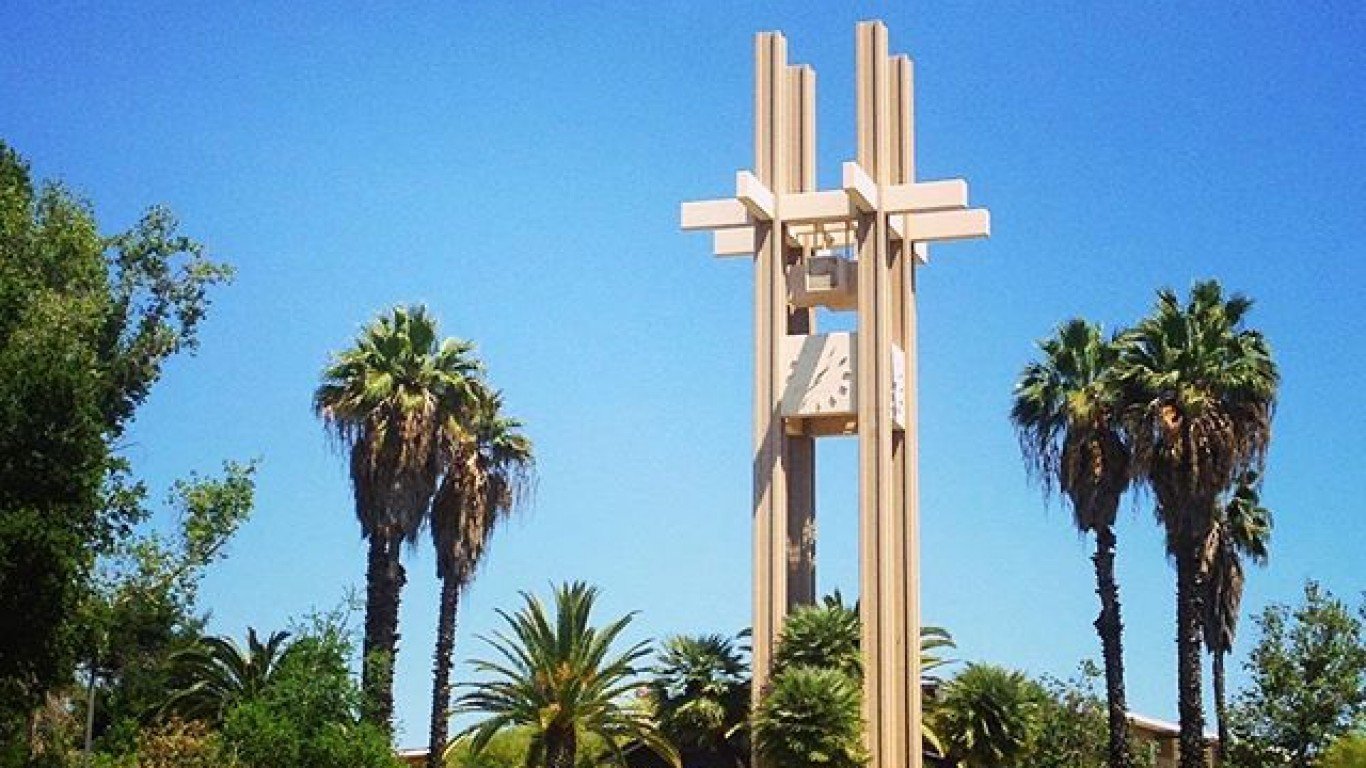
40. Pitzer College
> Avg. annual net price for students receiving grant aid: $31,590
> Median earnings 10 yrs. after entry for students receiving grant aid: $48,700
> Undergraduate students receiving grant aid: 46%
> Location: Claremont, CA
> Undergraduate enrollment: 1,086
[in-text-ad]

39. Loyola Marymount University
> Avg. annual net price for students receiving grant aid: $39,898
> Median earnings 10 yrs. after entry for students receiving grant aid: $61,300
> Undergraduate students receiving grant aid: 77%
> Location: Los Angeles, CA
> Undergraduate enrollment: 6,778

38. Brandeis University
> Avg. annual net price for students receiving grant aid: $37,688
> Median earnings 10 yrs. after entry for students receiving grant aid: $57,900
> Undergraduate students receiving grant aid: 59%
> Location: Waltham, MA
> Undergraduate enrollment: 3,688
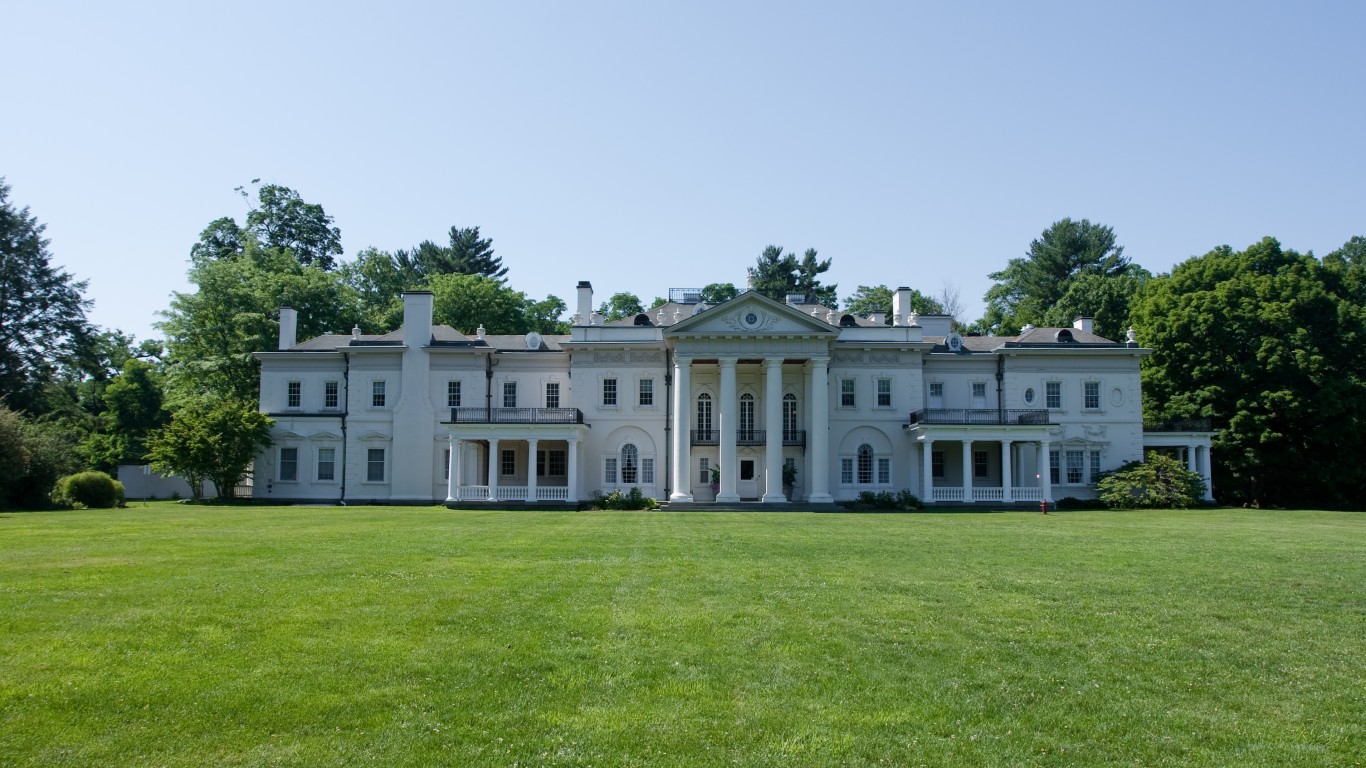
37. Bard College
> Avg. annual net price for students receiving grant aid: $25,885
> Median earnings 10 yrs. after entry for students receiving grant aid: $39,700
> Undergraduate students receiving grant aid: 67%
> Location: Annandale-On-Hudson, NY
> Undergraduate enrollment: 1,957
[in-text-ad-2]
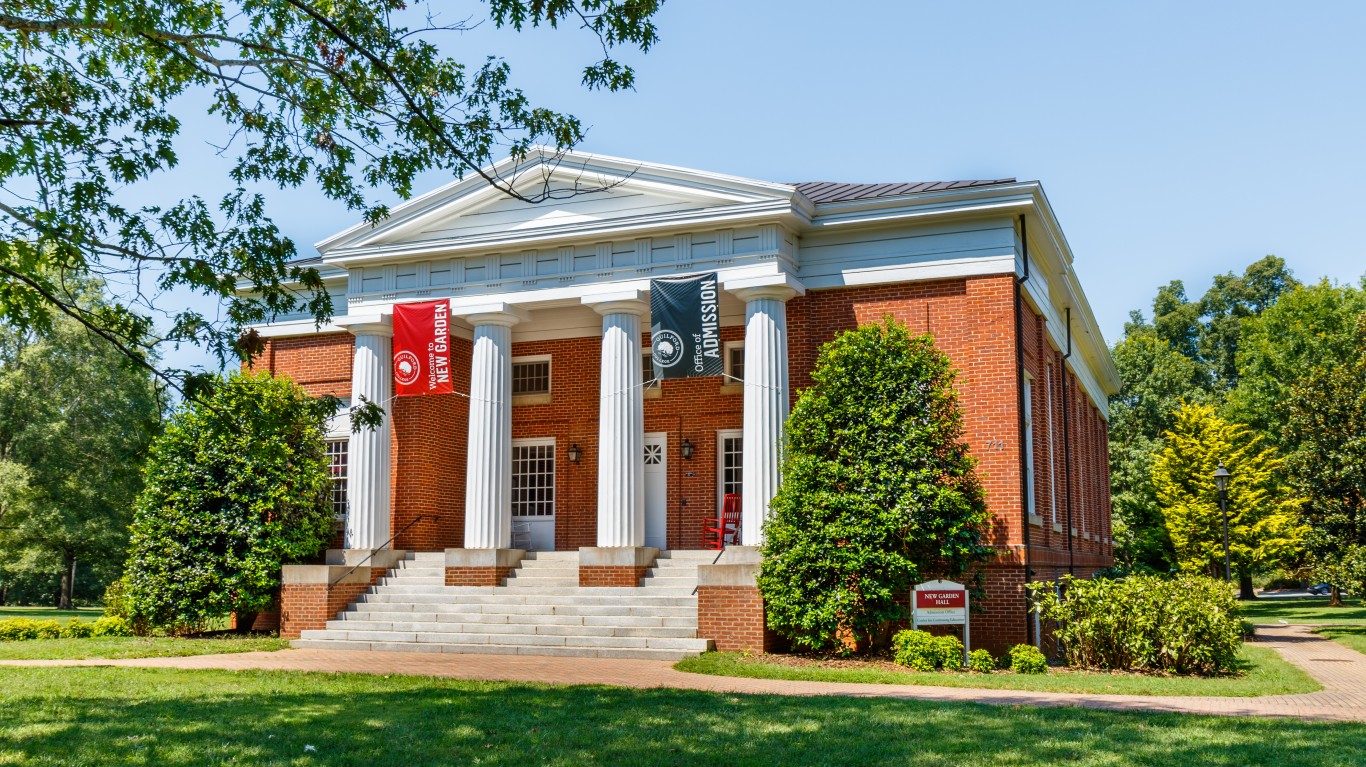
36. Guilford College
> Avg. annual net price for students receiving grant aid: $23,758
> Median earnings 10 yrs. after entry for students receiving grant aid: $36,400
> Undergraduate students receiving grant aid: 80%
> Location: Greensboro, NC
> Undergraduate enrollment: 1,525
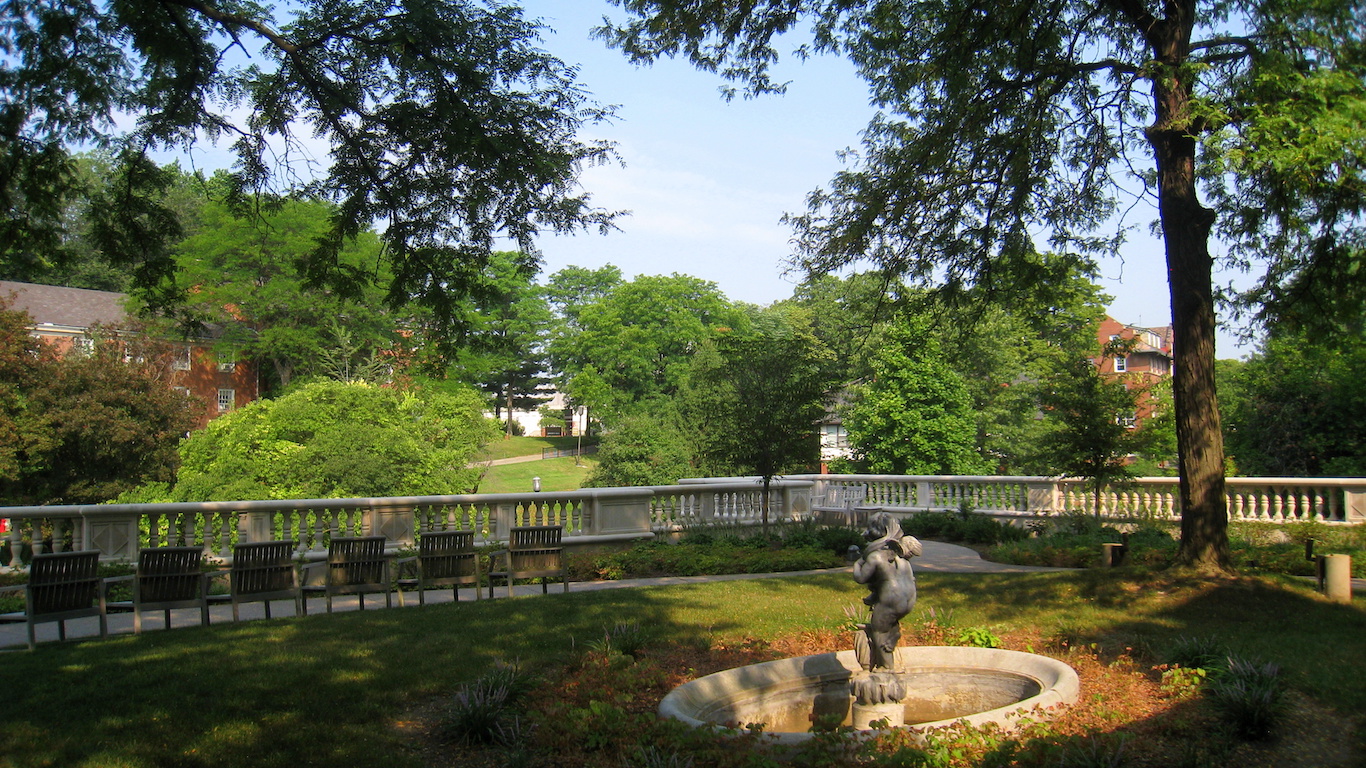
35. Chatham University
> Avg. annual net price for students receiving grant aid: $23,892
> Median earnings 10 yrs. after entry for students receiving grant aid: $36,600
> Undergraduate students receiving grant aid: 82%
> Location: Pittsburgh, PA
> Undergraduate enrollment: 1,408
[in-text-ad]

34. Pacific University
> Avg. annual net price for students receiving grant aid: $31,450
> Median earnings 10 yrs. after entry for students receiving grant aid: $46,600
> Undergraduate students receiving grant aid: 91%
> Location: Forest Grove, OR
> Undergraduate enrollment: 1,864
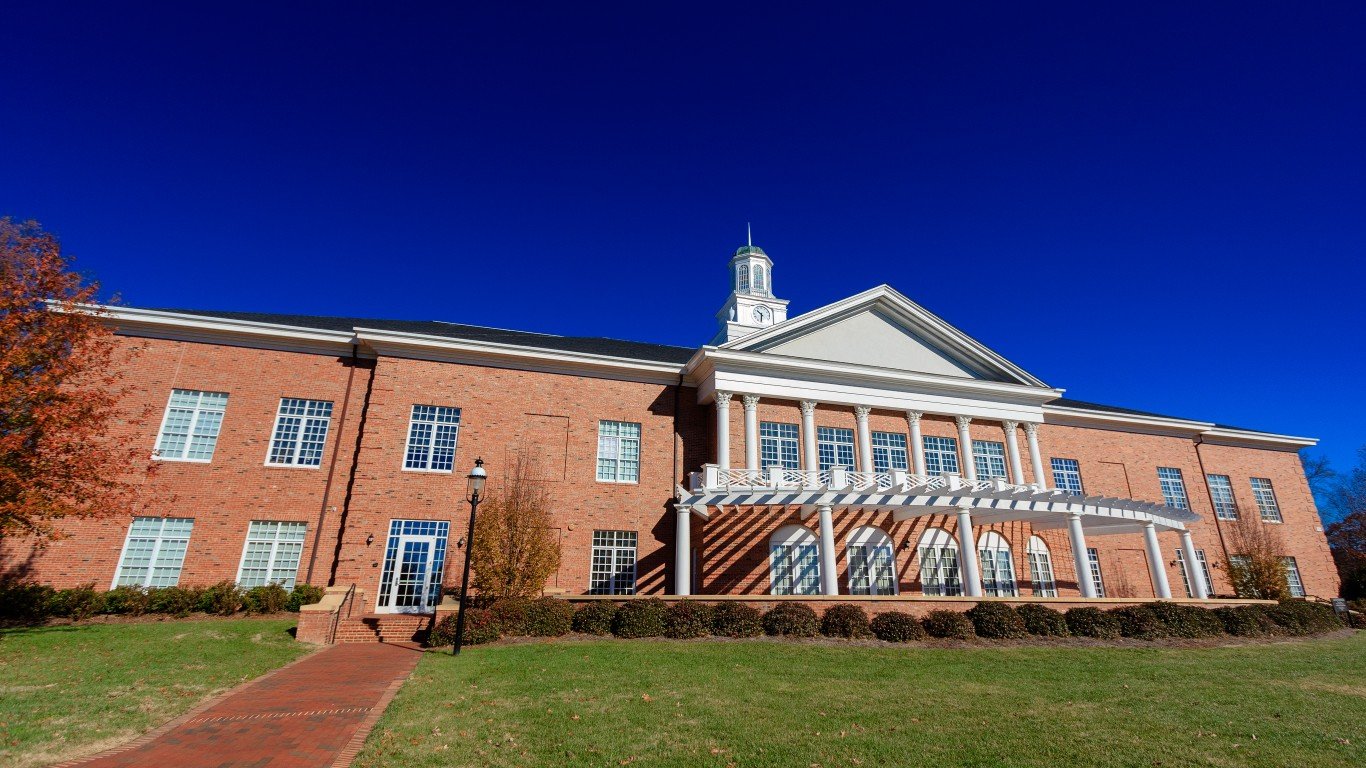
33. Elon University
> Avg. annual net price for students receiving grant aid: $35,160
> Median earnings 10 yrs. after entry for students receiving grant aid: $51,900
> Undergraduate students receiving grant aid: 56%
> Location: Elon, NC
> Undergraduate enrollment: 6,277
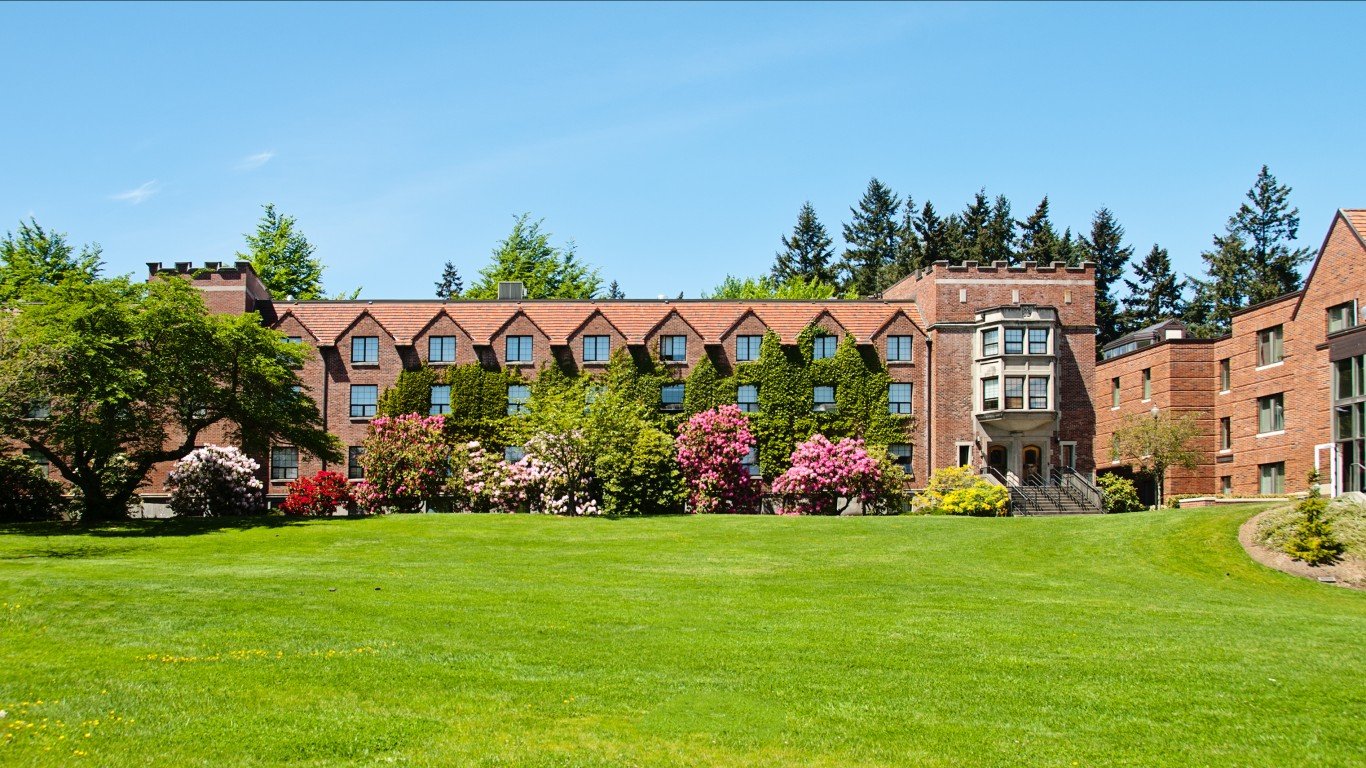
32. University of Puget Sound
> Avg. annual net price for students receiving grant aid: $36,075
> Median earnings 10 yrs. after entry for students receiving grant aid: $52,700
> Undergraduate students receiving grant aid: 99%
> Location: Tacoma, WA
> Undergraduate enrollment: 2,299
[in-text-ad-2]
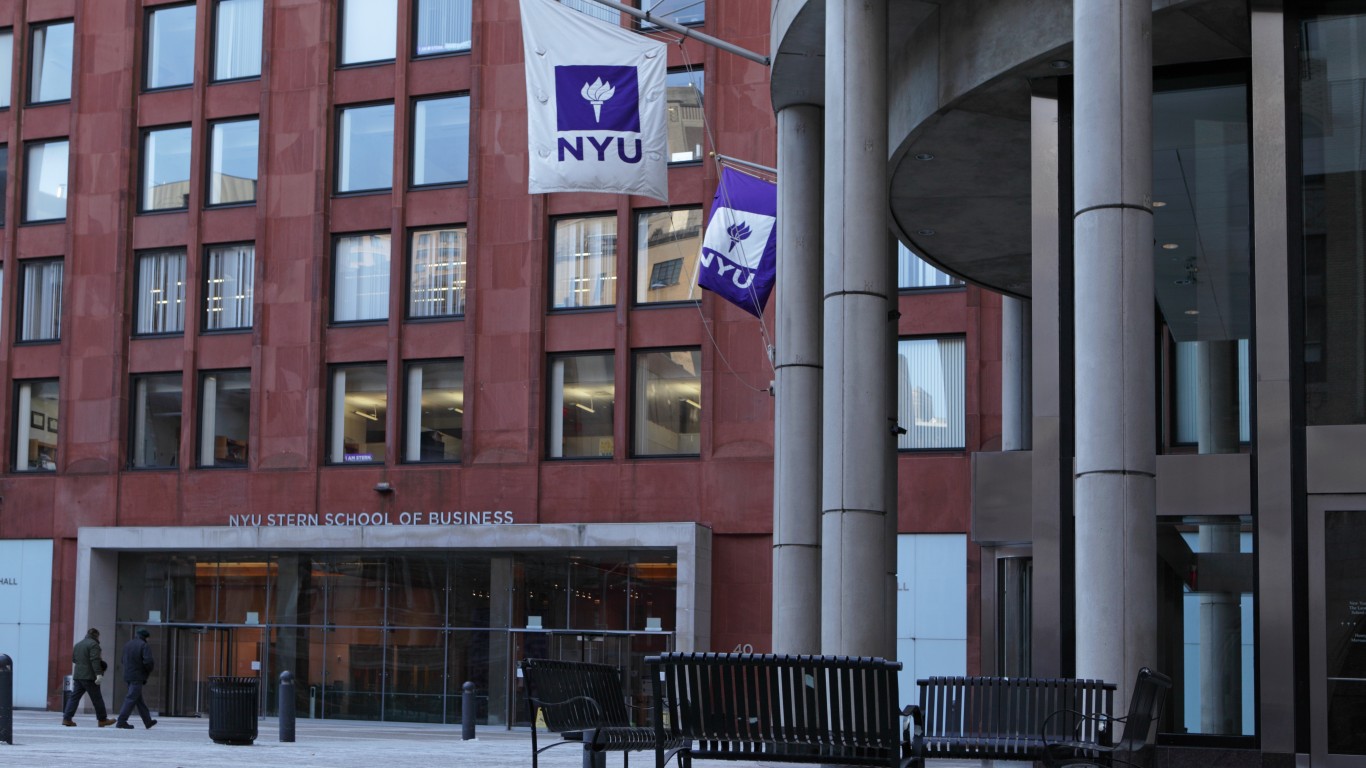
31. New York University
> Avg. annual net price for students receiving grant aid: $42,397
> Median earnings 10 yrs. after entry for students receiving grant aid: $61,900
> Undergraduate students receiving grant aid: 49%
> Location: New York, NY
> Undergraduate enrollment: 26,981

30. East-West University
> Avg. annual net price for students receiving grant aid: $17,683
> Median earnings 10 yrs. after entry for students receiving grant aid: $25,700
> Undergraduate students receiving grant aid: 92%
> Location: Chicago, IL
> Undergraduate enrollment: 447
[in-text-ad]

29. Virginia Union University
> Avg. annual net price for students receiving grant aid: $22,076
> Median earnings 10 yrs. after entry for students receiving grant aid: $32,000
> Undergraduate students receiving grant aid: 94%
> Location: Richmond, VA
> Undergraduate enrollment: 1,136
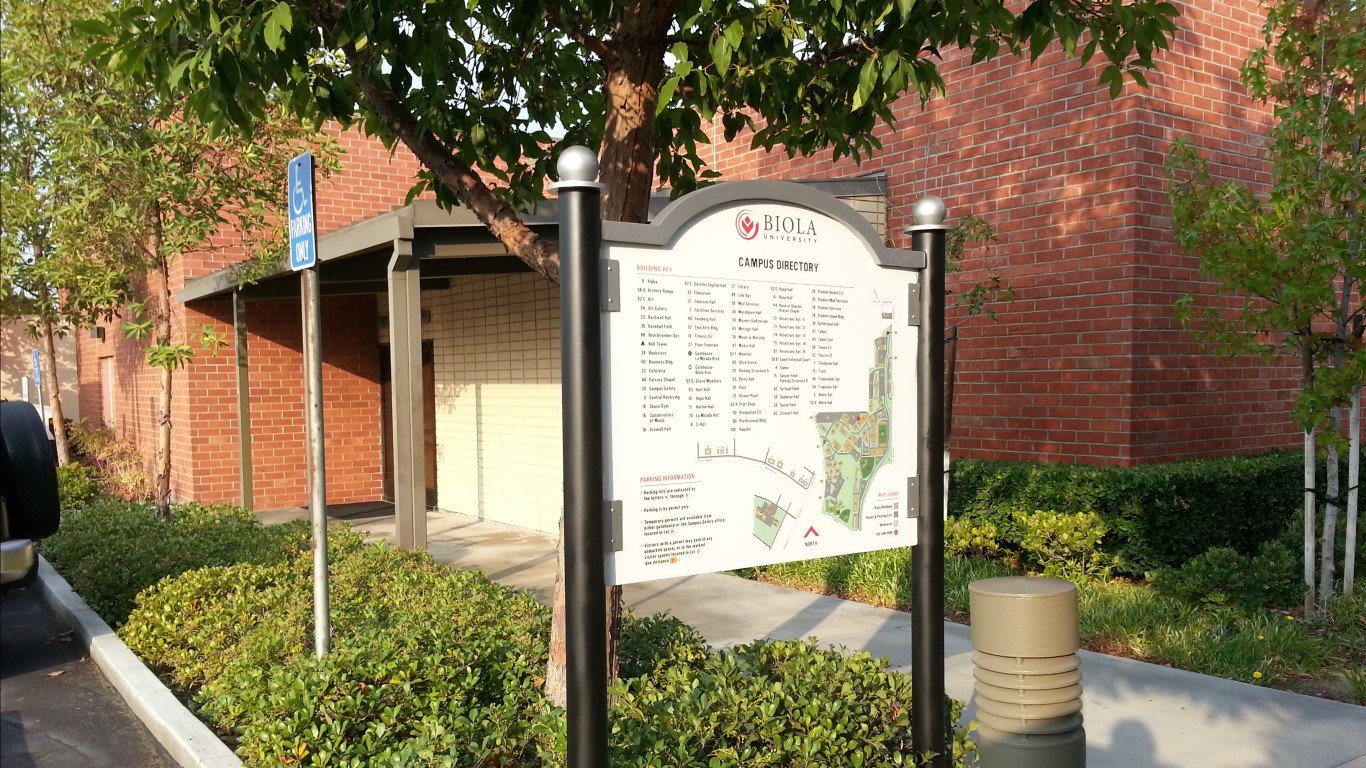
28. Biola University
> Avg. annual net price for students receiving grant aid: $31,345
> Median earnings 10 yrs. after entry for students receiving grant aid: $44,500
> Undergraduate students receiving grant aid: 99%
> Location: La Mirada, CA
> Undergraduate enrollment: 4,043

27. Johnson C Smith University
> Avg. annual net price for students receiving grant aid: $20,019
> Median earnings 10 yrs. after entry for students receiving grant aid: $28,400
> Undergraduate students receiving grant aid: 94%
> Location: Charlotte, NC
> Undergraduate enrollment: 1,435
[in-text-ad-2]

26. Marymount California University
> Avg. annual net price for students receiving grant aid: $25,484
> Median earnings 10 yrs. after entry for students receiving grant aid: $35,900
> Undergraduate students receiving grant aid: 83%
> Location: Rancho Palos Verdes, CA
> Undergraduate enrollment: 602
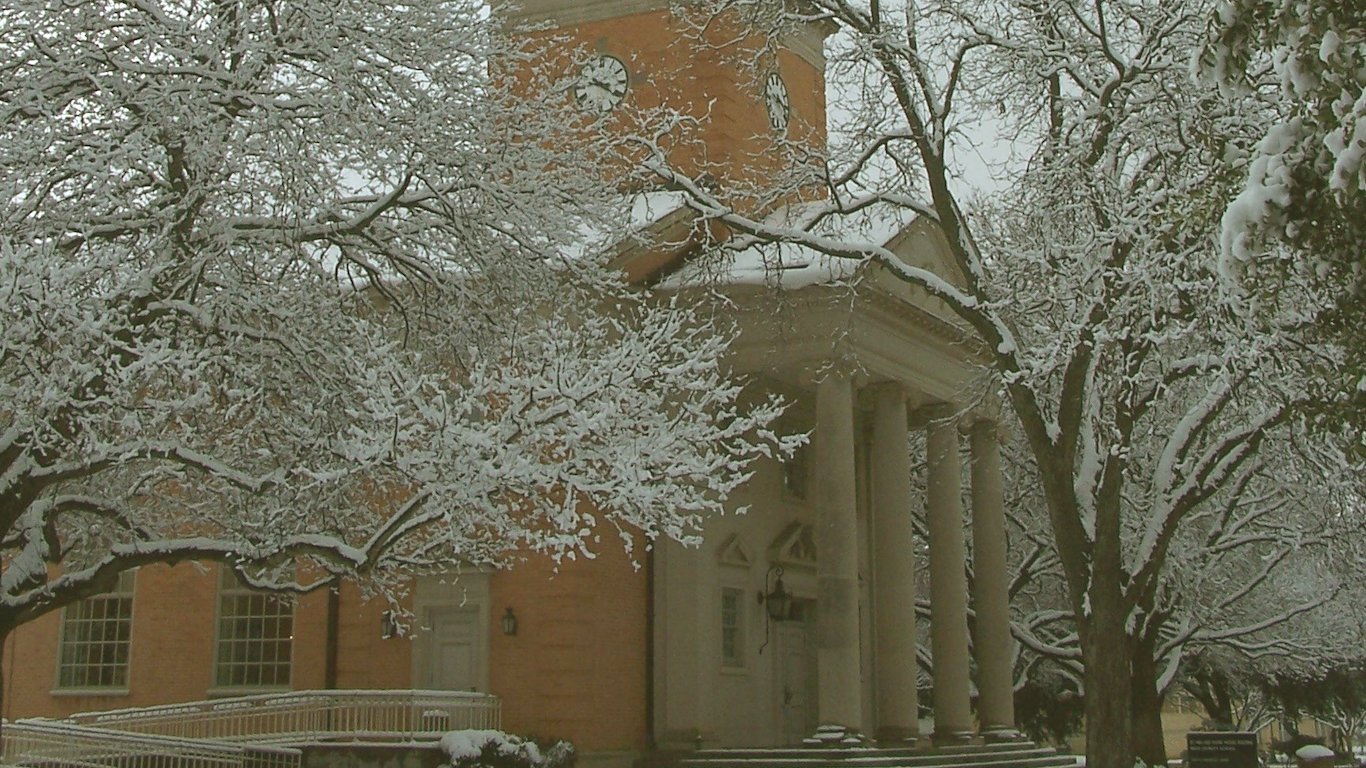
25. Texas Christian University
> Avg. annual net price for students receiving grant aid: $37,513
> Median earnings 10 yrs. after entry for students receiving grant aid: $52,800
> Undergraduate students receiving grant aid: 69%
> Location: Fort Worth, TX
> Undergraduate enrollment: 9,474
[in-text-ad]
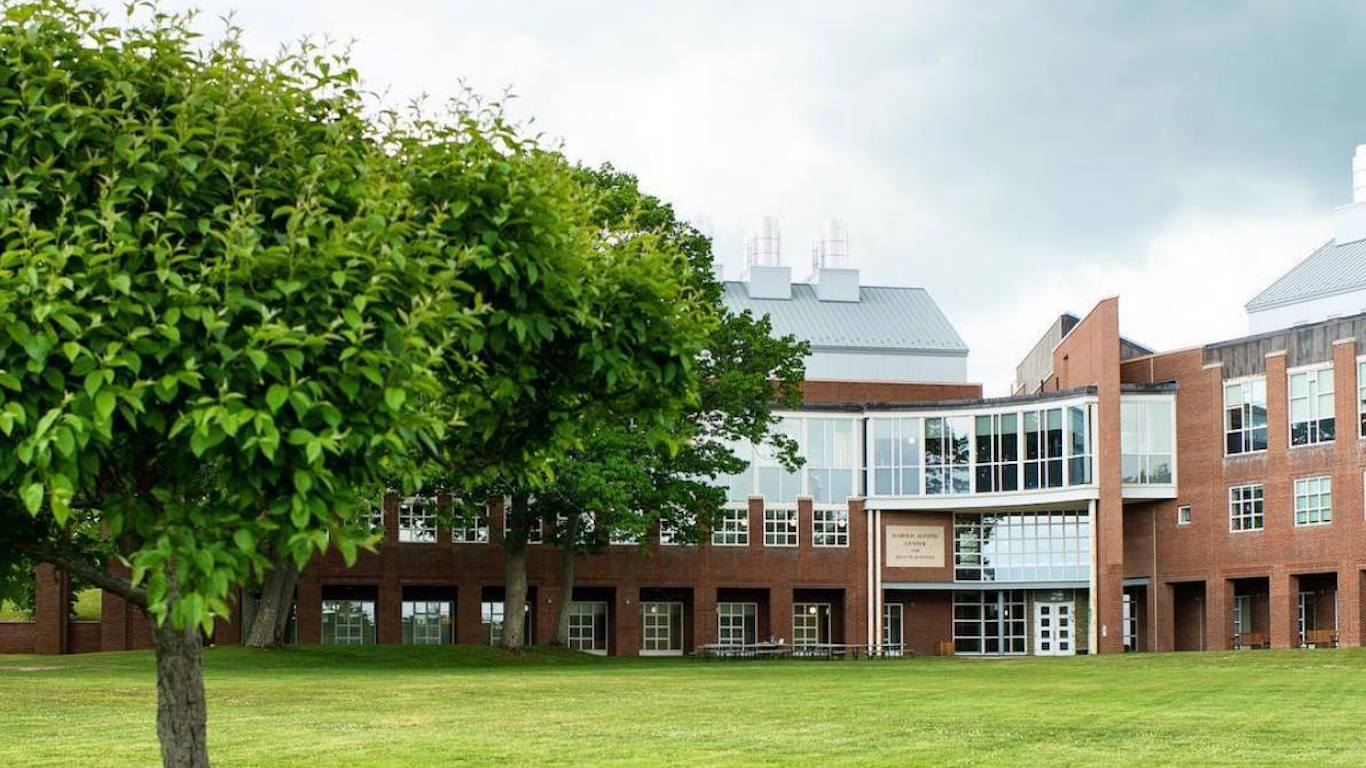
24. University of New England
> Avg. annual net price for students receiving grant aid: $33,729
> Median earnings 10 yrs. after entry for students receiving grant aid: $46,300
> Undergraduate students receiving grant aid: 53%
> Location: Biddeford, ME
> Undergraduate enrollment: 4,275

23. Sacred Heart University
> Avg. annual net price for students receiving grant aid: $41,066
> Median earnings 10 yrs. after entry for students receiving grant aid: $56,000
> Undergraduate students receiving grant aid: 90%
> Location: Fairfield, CT
> Undergraduate enrollment: 6,158

22. Chapman University
> Avg. annual net price for students receiving grant aid: $40,251
> Median earnings 10 yrs. after entry for students receiving grant aid: $54,500
> Undergraduate students receiving grant aid: 81%
> Location: Orange, CA
> Undergraduate enrollment: 7,505
[in-text-ad-2]
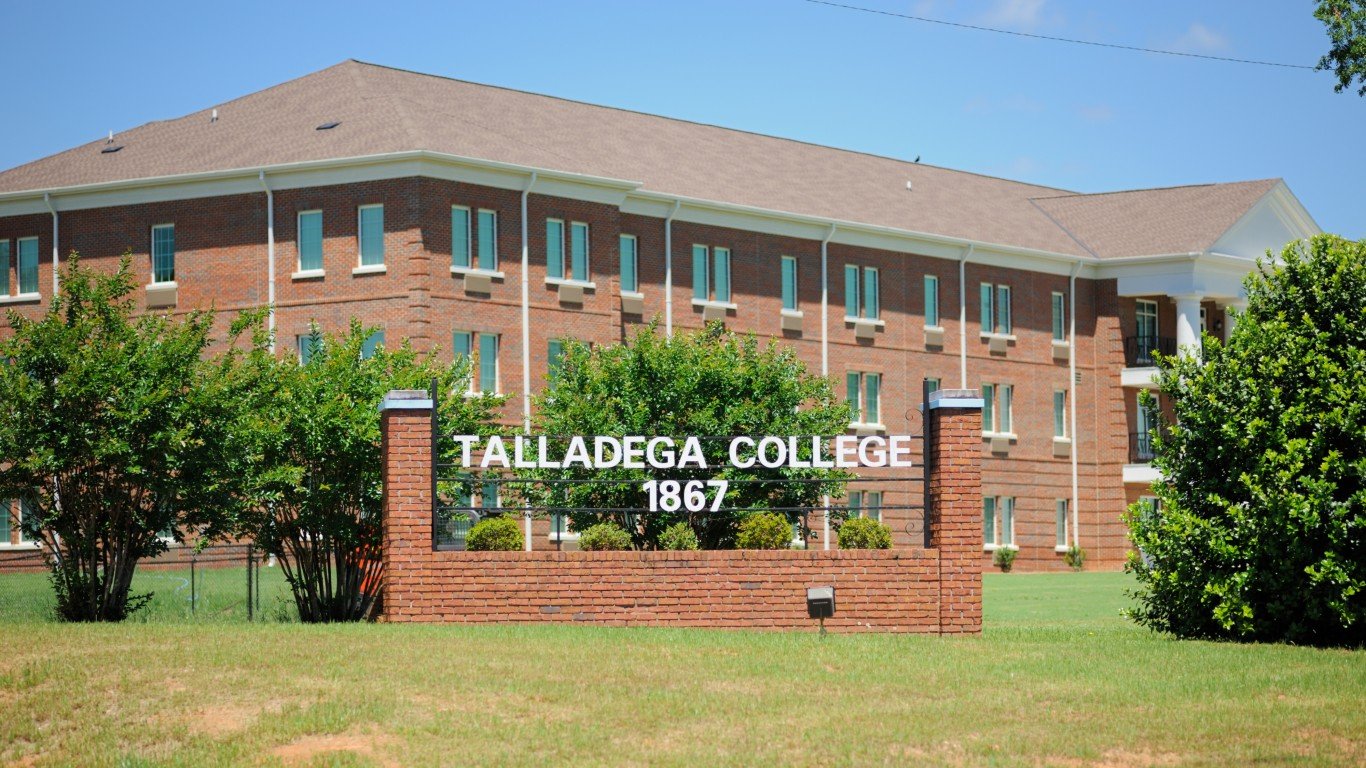
21. Talladega College
> Avg. annual net price for students receiving grant aid: $16,386
> Median earnings 10 yrs. after entry for students receiving grant aid: $21,900
> Undergraduate students receiving grant aid: 96%
> Location: Talladega, AL
> Undergraduate enrollment: 1,230
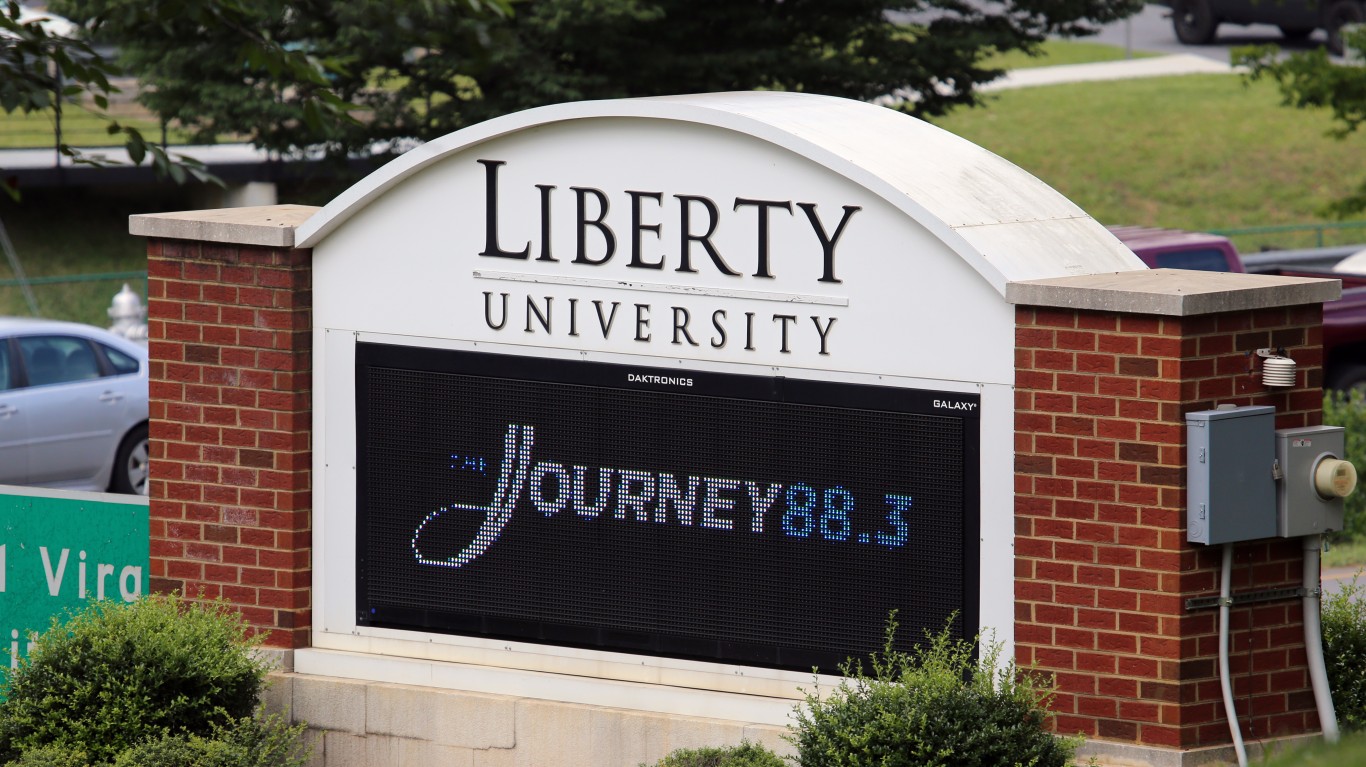
20. Liberty University
> Avg. annual net price for students receiving grant aid: $27,883
> Median earnings 10 yrs. after entry for students receiving grant aid: $36,700
> Undergraduate students receiving grant aid: 84%
> Location: Lynchburg, VA
> Undergraduate enrollment: 47,025
[in-text-ad]
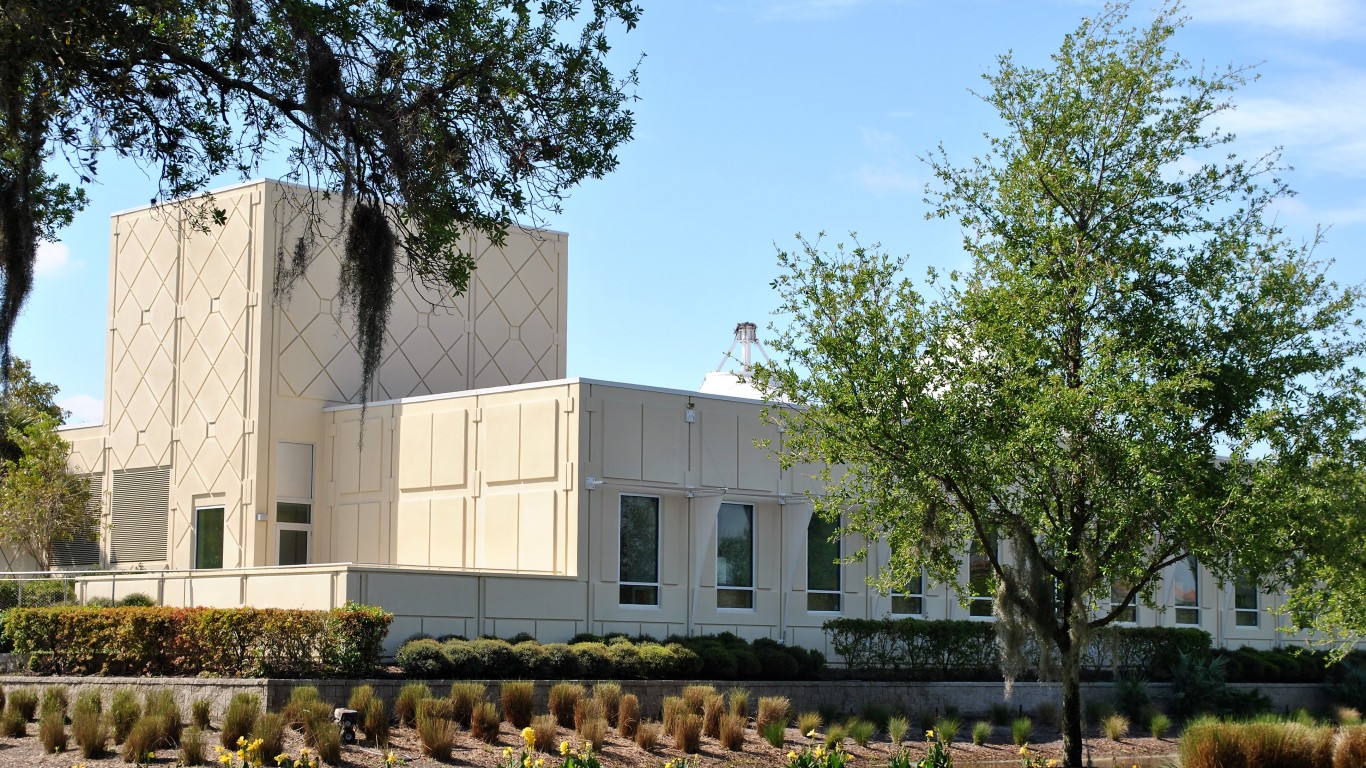
19. Eckerd College
> Avg. annual net price for students receiving grant aid: $32,575
> Median earnings 10 yrs. after entry for students receiving grant aid: $42,200
> Undergraduate students receiving grant aid: 92%
> Location: Saint Petersburg, FL
> Undergraduate enrollment: 2,007
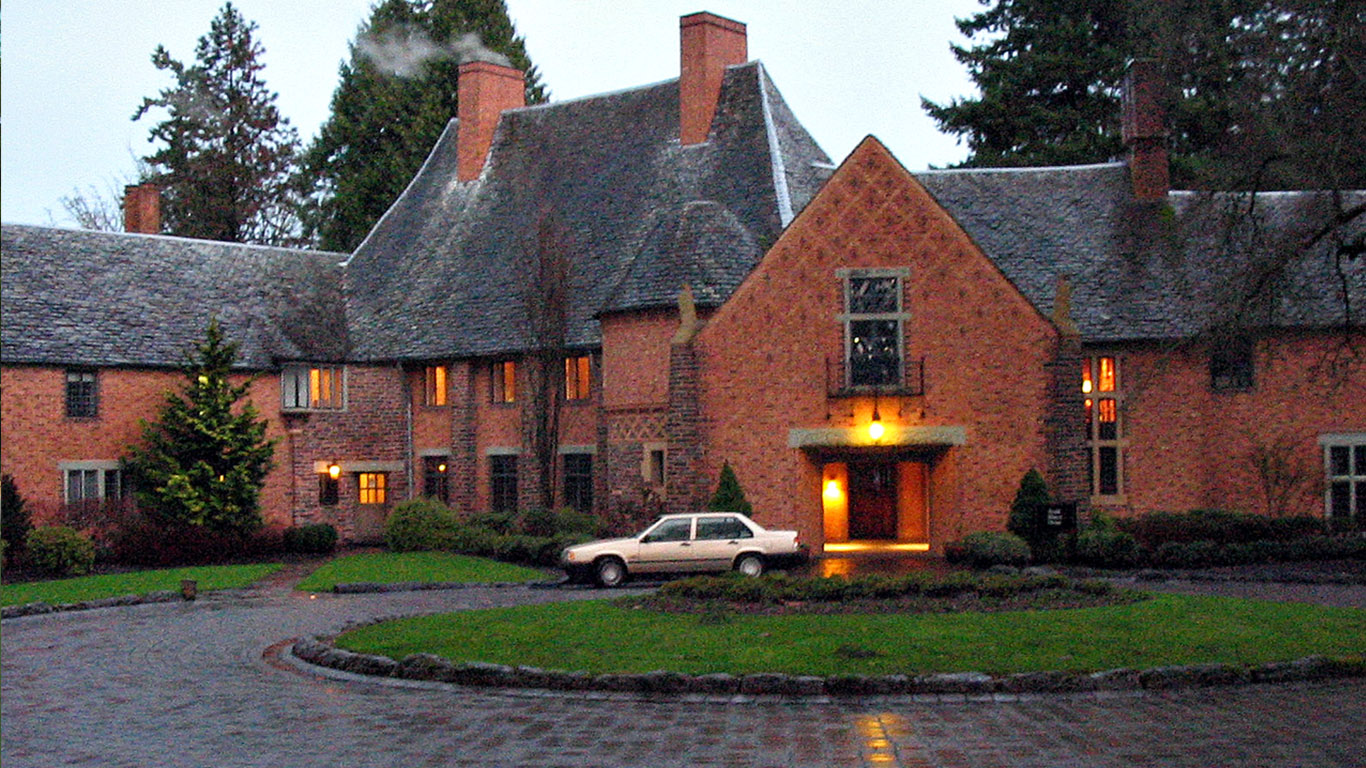
18. Lewis & Clark College
> Avg. annual net price for students receiving grant aid: $35,919
> Median earnings 10 yrs. after entry for students receiving grant aid: $46,200
> Undergraduate students receiving grant aid: 91%
> Location: Portland, OR
> Undergraduate enrollment: 1,935
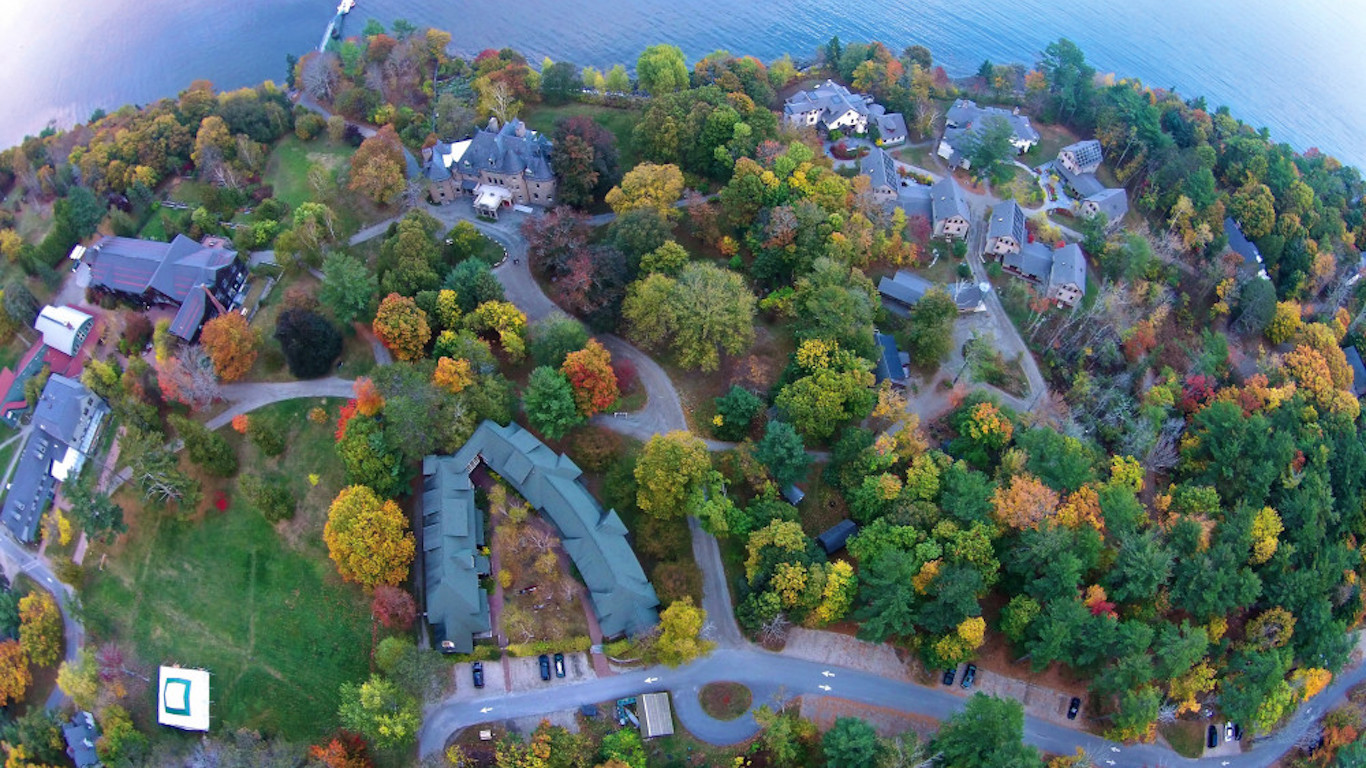
17. College of the Atlantic
> Avg. annual net price for students receiving grant aid: $19,480
> Median earnings 10 yrs. after entry for students receiving grant aid: $24,600
> Undergraduate students receiving grant aid: 96%
> Location: Bar Harbor, ME
> Undergraduate enrollment: 355
[in-text-ad-2]
16. Reed College
> Avg. annual net price for students receiving grant aid: $33,495
> Median earnings 10 yrs. after entry for students receiving grant aid: $42,200
> Undergraduate students receiving grant aid: 50%
> Location: Portland, OR
> Undergraduate enrollment: 1,457
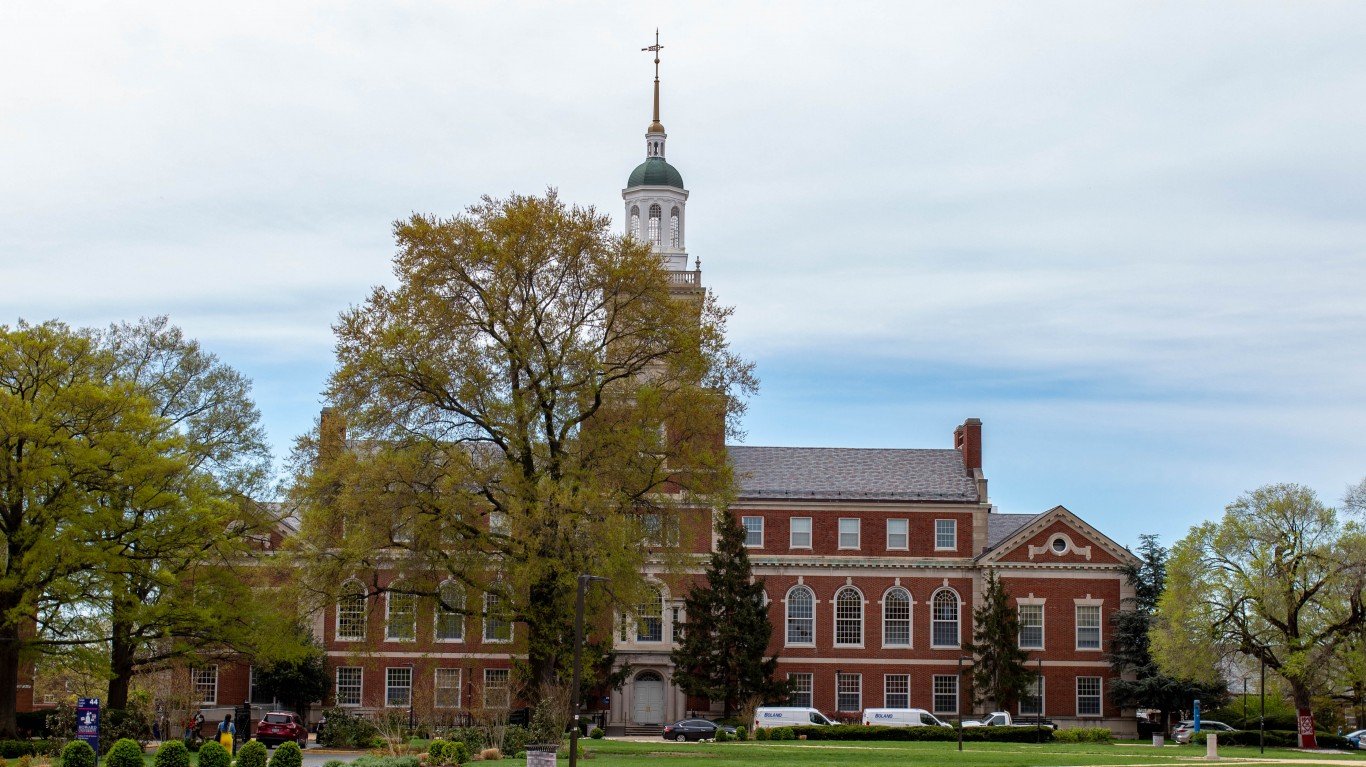
15. Howard University
> Avg. annual net price for students receiving grant aid: $39,792
> Median earnings 10 yrs. after entry for students receiving grant aid: $49,200
> Undergraduate students receiving grant aid: 77%
> Location: Washington, DC
> Undergraduate enrollment: 6,526
[in-text-ad]
14. Belmont University
> Avg. annual net price for students receiving grant aid: $35,861
> Median earnings 10 yrs. after entry for students receiving grant aid: $44,100
> Undergraduate students receiving grant aid: 73%
> Location: Nashville, TN
> Undergraduate enrollment: 6,820
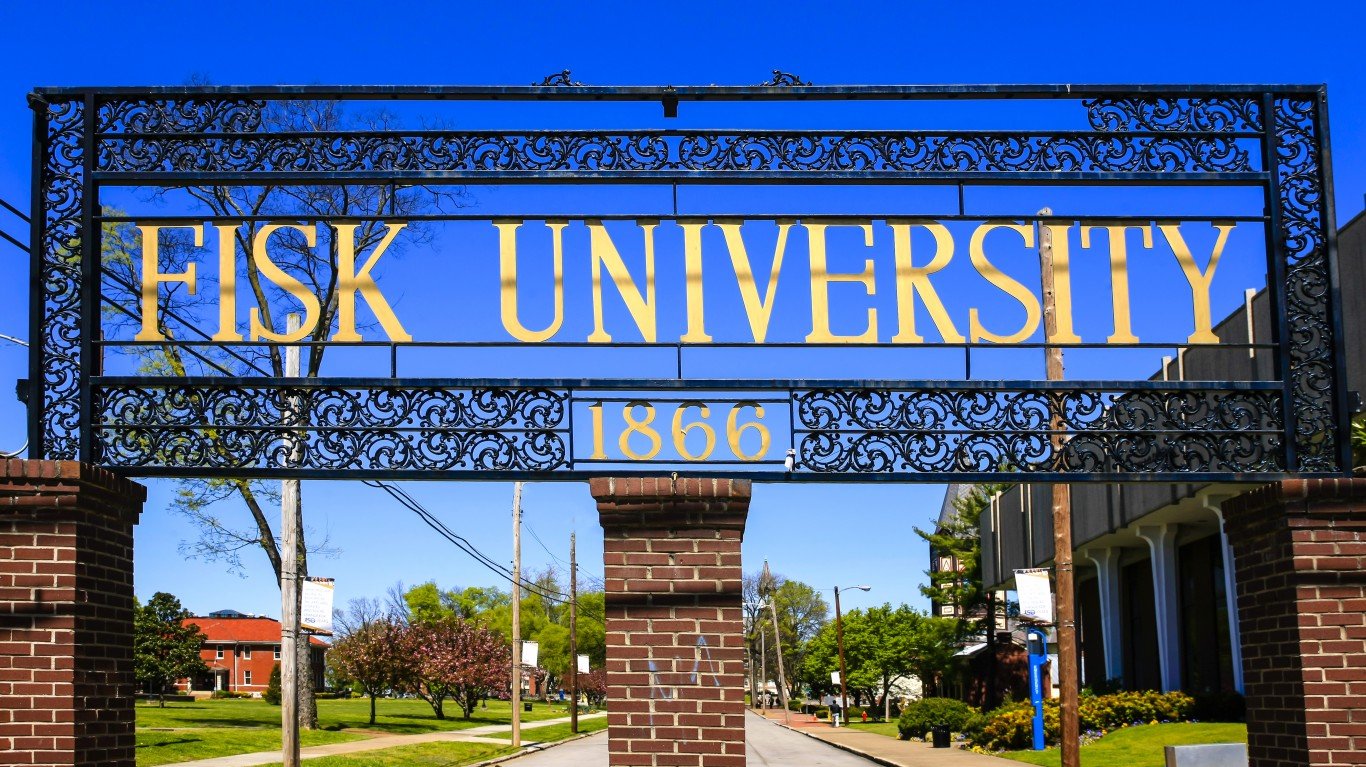
13. Fisk University
> Avg. annual net price for students receiving grant aid: $29,114
> Median earnings 10 yrs. after entry for students receiving grant aid: $35,000
> Undergraduate students receiving grant aid: 89%
> Location: Nashville, TN
> Undergraduate enrollment: 840
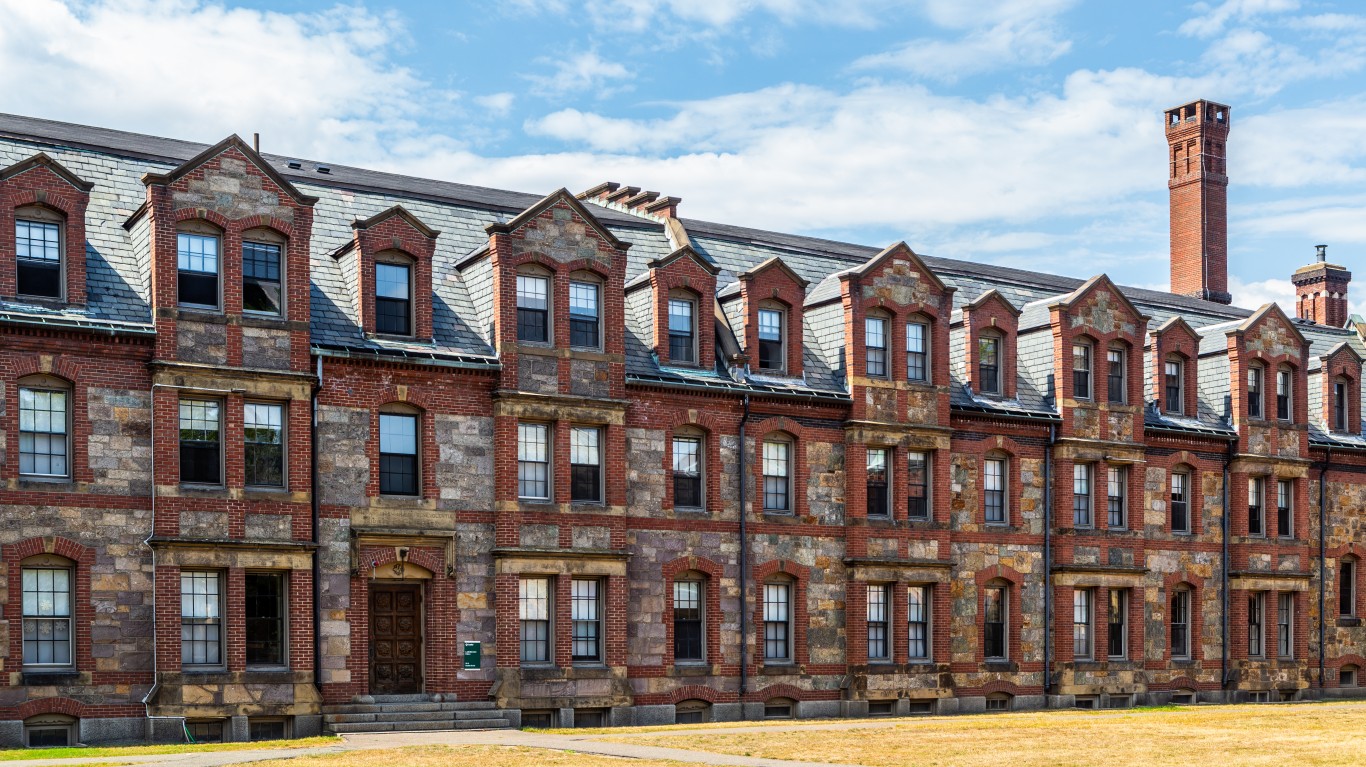
12. Lesley University
> Avg. annual net price for students receiving grant aid: $32,289
> Median earnings 10 yrs. after entry for students receiving grant aid: $38,700
> Undergraduate students receiving grant aid: 73%
> Location: Cambridge, MA
> Undergraduate enrollment: 2,128
[in-text-ad-2]
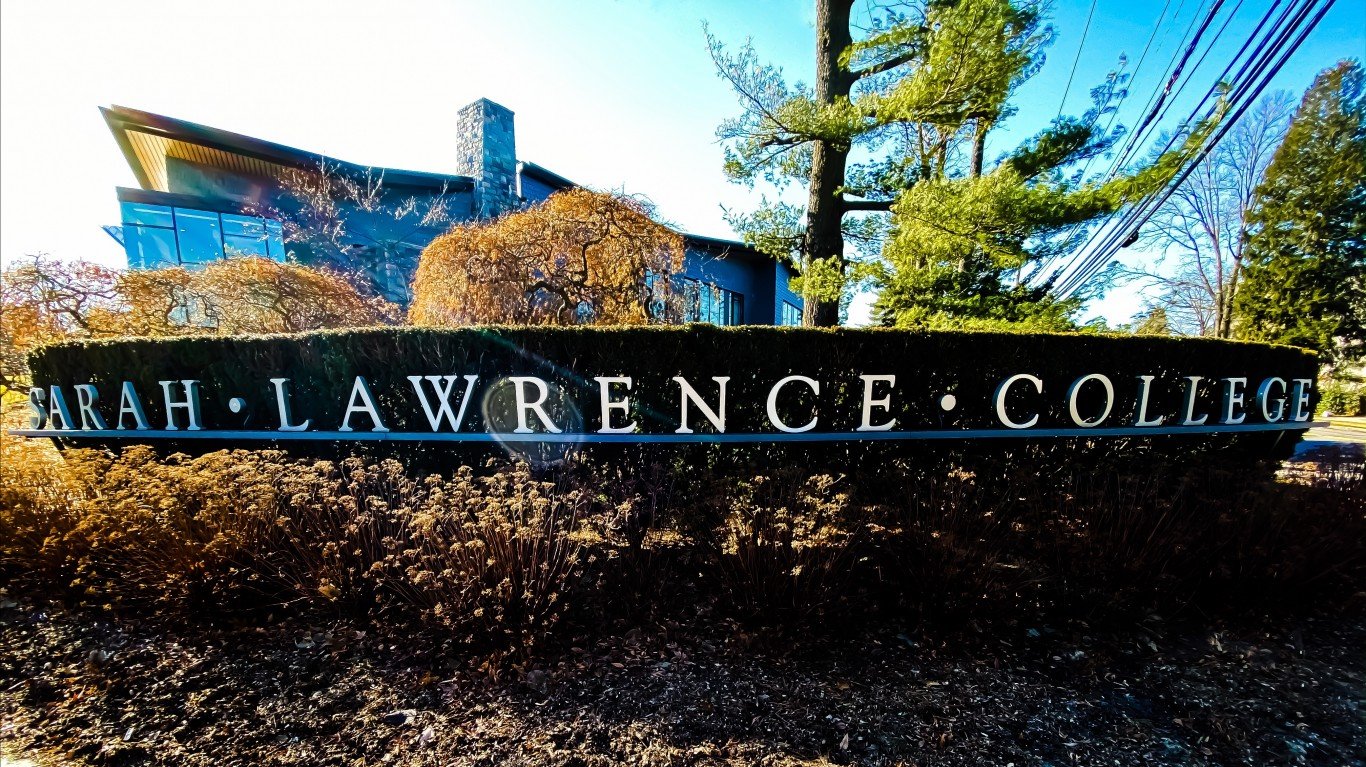
11. Sarah Lawrence College
> Avg. annual net price for students receiving grant aid: $37,322
> Median earnings 10 yrs. after entry for students receiving grant aid: $43,000
> Undergraduate students receiving grant aid: 79%
> Location: Bronxville, NY
> Undergraduate enrollment: 1,433
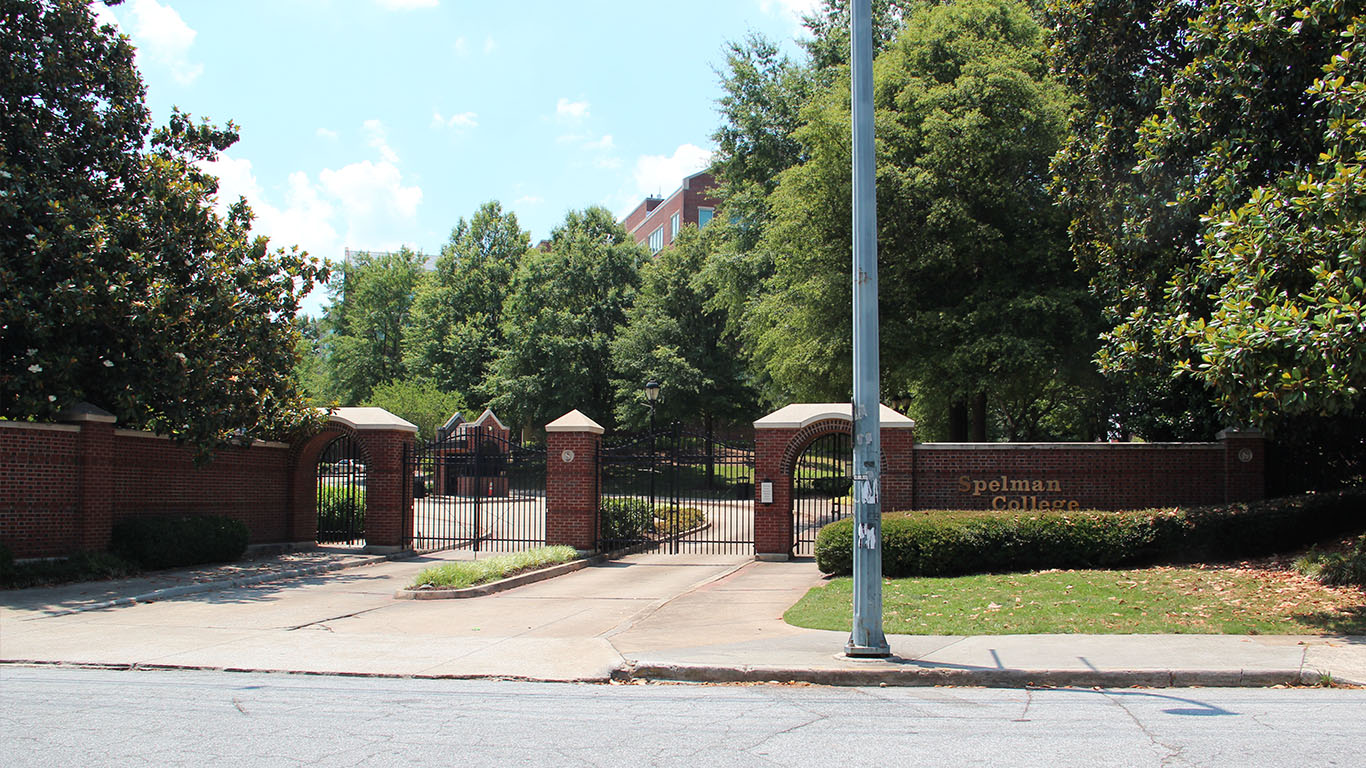
10. Spelman College
> Avg. annual net price for students receiving grant aid: $40,840
> Median earnings 10 yrs. after entry for students receiving grant aid: $47,000
> Undergraduate students receiving grant aid: 86%
> Location: Atlanta, GA
> Undergraduate enrollment: 2,120
[in-text-ad]
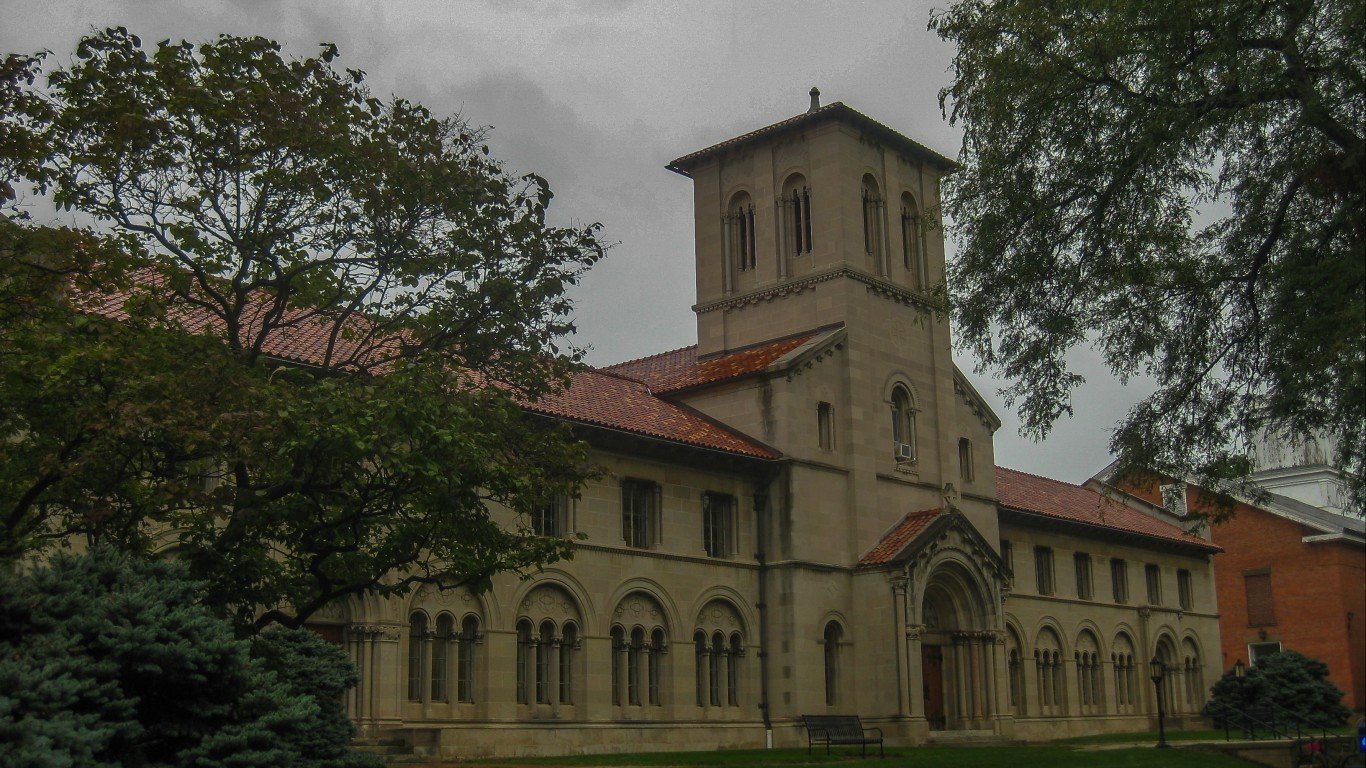
9. Oberlin College
> Avg. annual net price for students receiving grant aid: $35,555
> Median earnings 10 yrs. after entry for students receiving grant aid: $40,800
> Undergraduate students receiving grant aid: 85%
> Location: Oberlin, OH
> Undergraduate enrollment: 2,846
8. Marymount Manhattan College
> Avg. annual net price for students receiving grant aid: $37,254
> Median earnings 10 yrs. after entry for students receiving grant aid: $41,400
> Undergraduate students receiving grant aid: 85%
> Location: New York, NY
> Undergraduate enrollment: 1,892
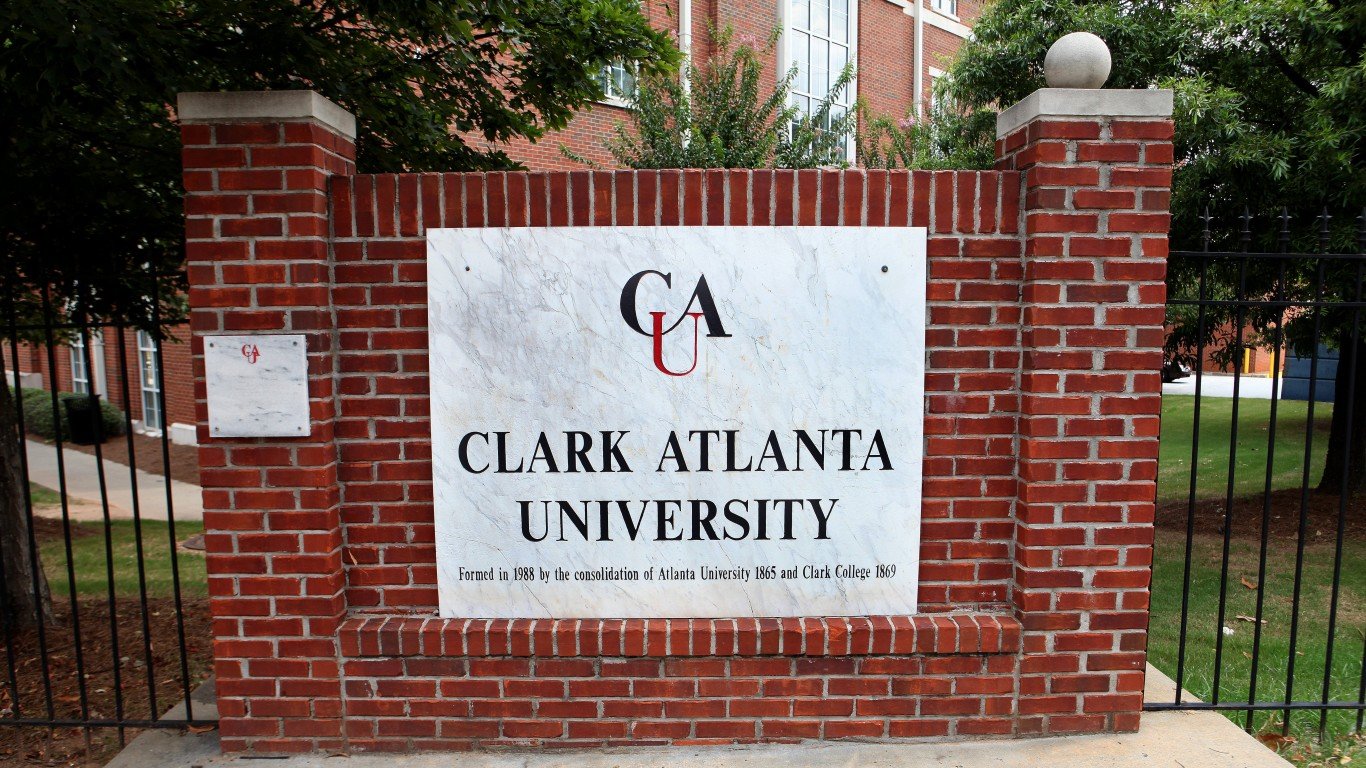
7. Clark Atlanta University
> Avg. annual net price for students receiving grant aid: $33,276
> Median earnings 10 yrs. after entry for students receiving grant aid: $35,500
> Undergraduate students receiving grant aid: 82%
> Location: Atlanta, GA
> Undergraduate enrollment: 3,318
[in-text-ad-2]
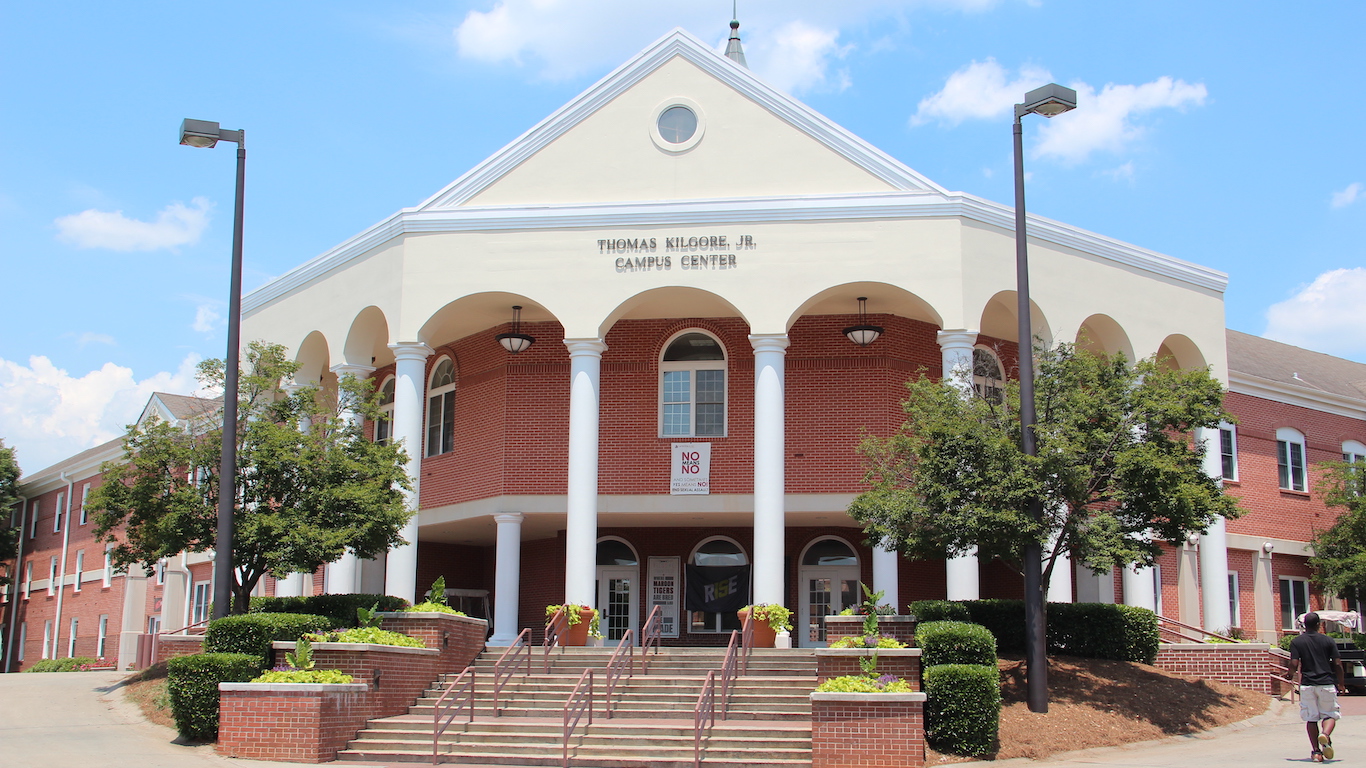
6. Morehouse College
> Avg. annual net price for students receiving grant aid: $40,068
> Median earnings 10 yrs. after entry for students receiving grant aid: $41,800
> Undergraduate students receiving grant aid: 76%
> Location: Atlanta, GA
> Undergraduate enrollment: 2,238
5. The New School
> Avg. annual net price for students receiving grant aid: $42,812
> Median earnings 10 yrs. after entry for students receiving grant aid: $44,500
> Undergraduate students receiving grant aid: 84%
> Location: New York, NY
> Undergraduate enrollment: 7,409
[in-text-ad]
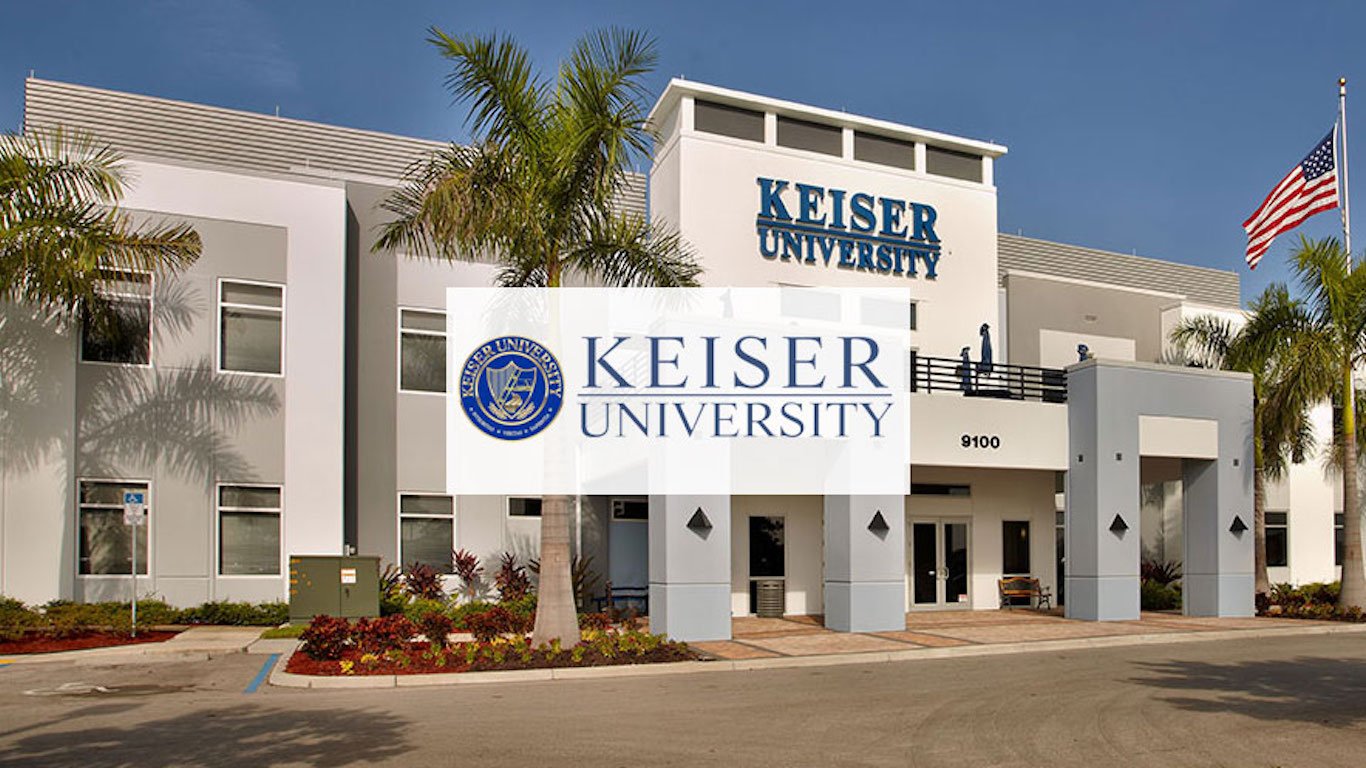
4. Keiser University-Ft Lauderdale
> Avg. annual net price for students receiving grant aid: $30,767
> Median earnings 10 yrs. after entry for students receiving grant aid: $31,100
> Undergraduate students receiving grant aid: 82%
> Location: Fort Lauderdale, FL
> Undergraduate enrollment: 17,490
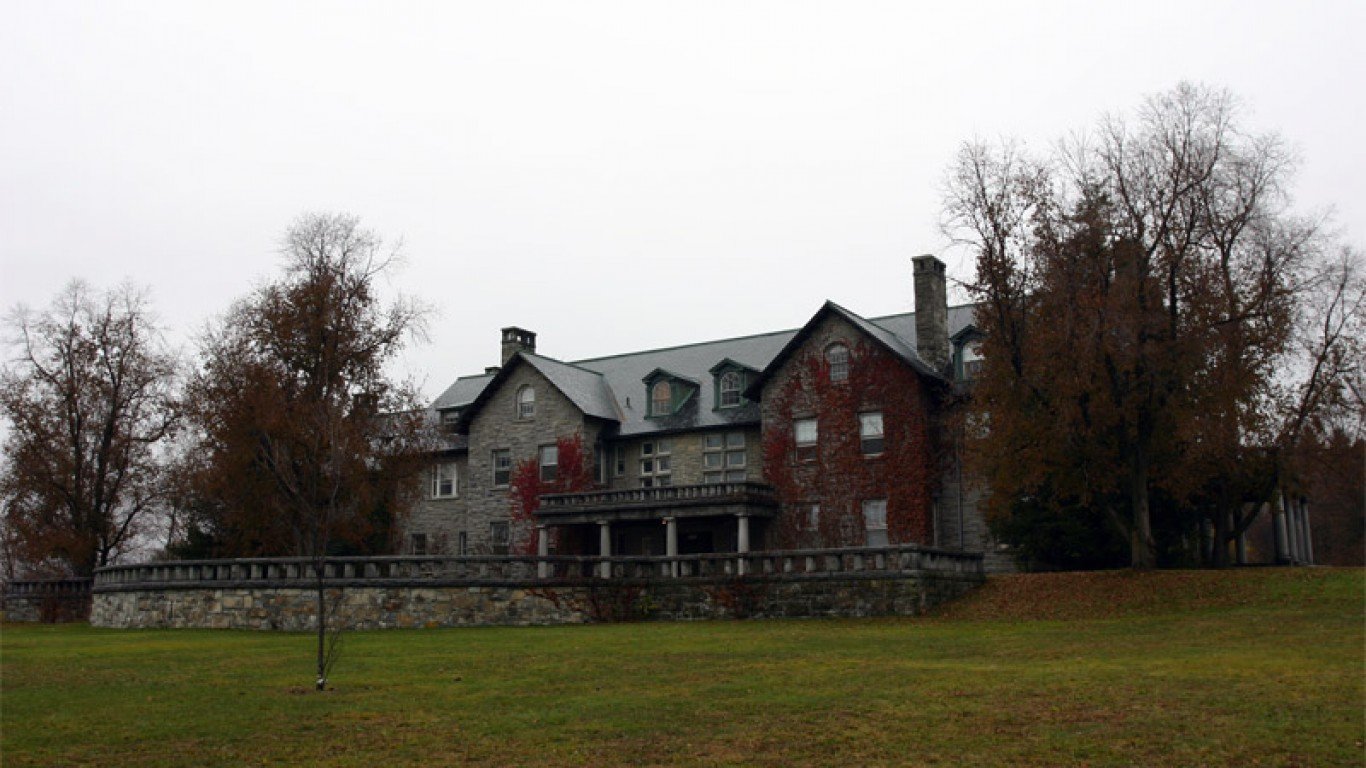
3. Bennington College
> Avg. annual net price for students receiving grant aid: $29,386
> Median earnings 10 yrs. after entry for students receiving grant aid: $29,500
> Undergraduate students receiving grant aid: 90%
> Location: Bennington, VT
> Undergraduate enrollment: 729
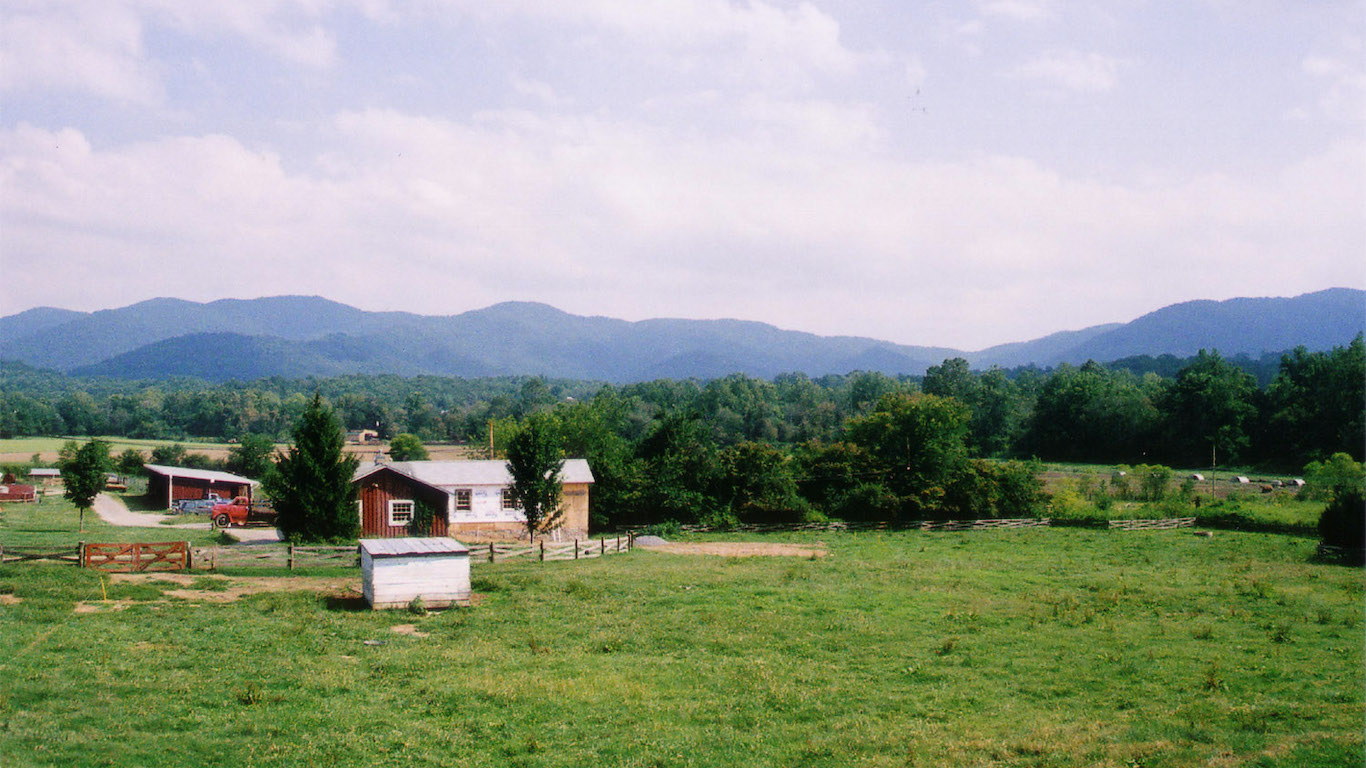
2. Warren Wilson College
> Avg. annual net price for students receiving grant aid: $26,017
> Median earnings 10 yrs. after entry for students receiving grant aid: $25,600
> Undergraduate students receiving grant aid: 94%
> Location: Swannanoa, NC
> Undergraduate enrollment: 706
[in-text-ad-2]
1. St. John’s College
> Avg. annual net price for students receiving grant aid: $40,973
> Median earnings 10 yrs. after entry for students receiving grant aid: $33,500
> Undergraduate students receiving grant aid: 99%
> Location: Santa Fe, NM
> Undergraduate enrollment: 317
Methodology:
To determine the 50 top-ranked colleges that pay off the least, 24/7 Wall St. reviewed data on typical post-college earnings for over 600 colleges and universities. Schools included in the U.S. News & World Report’s 2020 National Universities and National Liberal Arts Colleges lists were ranked based on the ratio of median earnings 10 years after entry to university to the average net price of attendance at that university.
Data on median earnings in 2014 and 2015 came from the U.S. Department of Education and represents the sum of all wages, compensation, and self-employment income for individuals who entered school during the 2003-04 and 2004-05 academic years and received financial aid while there. Data on net price of attendance also came from the DOE and represents the cost of tuition and fees, books and supplies, and living expenses minus federal, state, and institutional scholarship aid for all undergraduate students receiving Title IV aid in the 2017-18 academic year. Data on the percentage of undergraduate students awarded federal, state, and local institutional or other sources of grant aid came from the DOE and is for the 2017-18 academic year. Data on total undergraduate enrollment came from the DOE and is for the Fall 2019 semester.
Essential Tips for Investing: Sponsored
A financial advisor can help you understand the advantages and disadvantages of investment properties. Finding a qualified financial advisor doesn’t have to be hard. SmartAsset’s free tool matches you with up to three financial advisors who serve your area, and you can interview your advisor matches at no cost to decide which one is right for you. If you’re ready to find an advisor who can help you achieve your financial goals, get started now.
Investing in real estate can diversify your portfolio. But expanding your horizons may add additional costs. If you’re an investor looking to minimize expenses, consider checking out online brokerages. They often offer low investment fees, helping you maximize your profit.
Thank you for reading! Have some feedback for us?
Contact the 24/7 Wall St. editorial team.
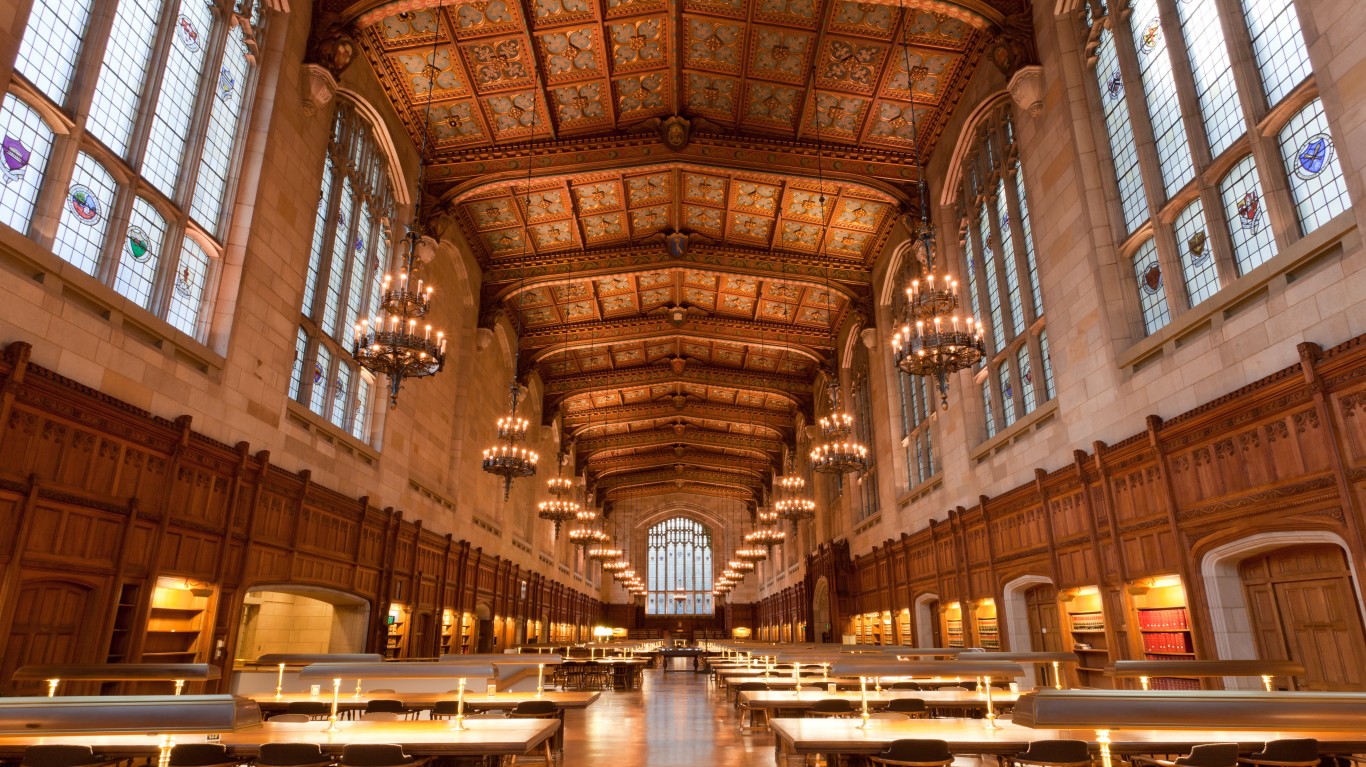 24/7 Wall St.
24/7 Wall St.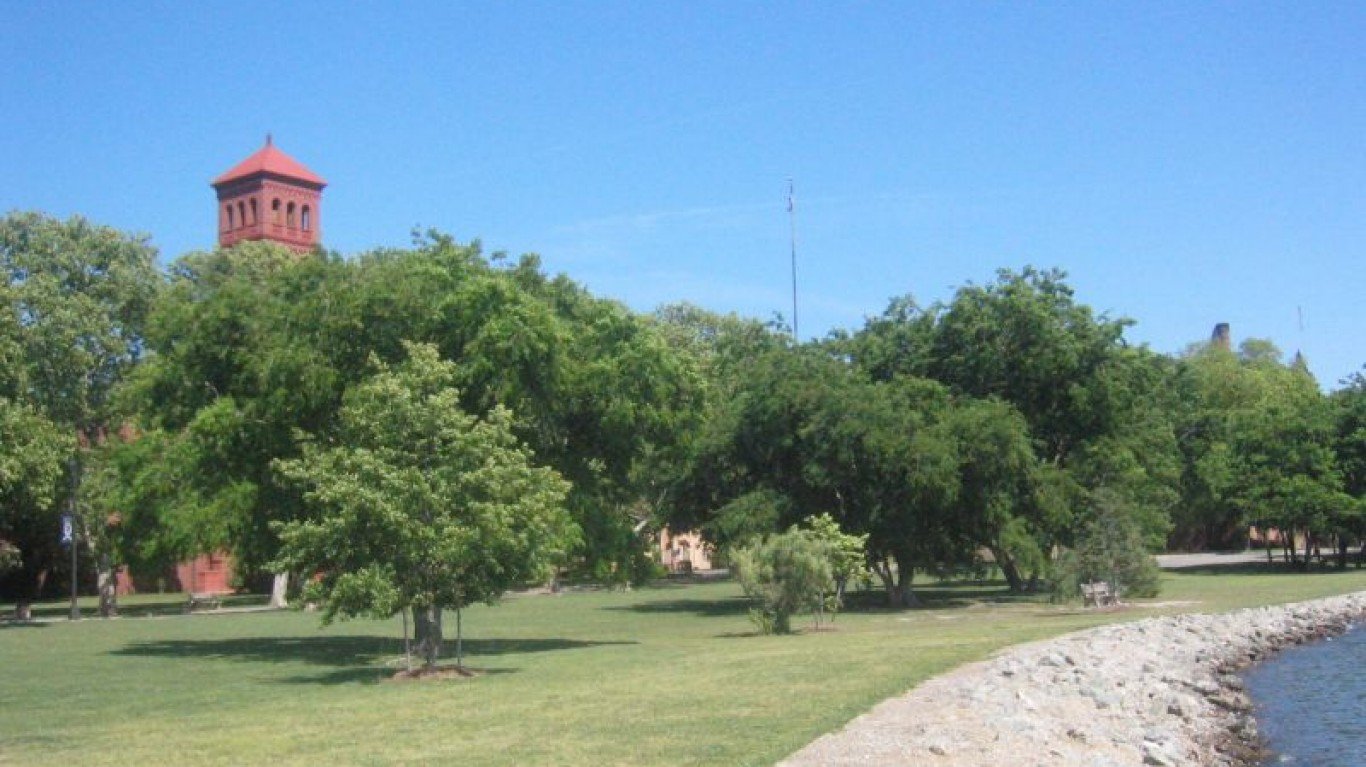
 24/7 Wall St.
24/7 Wall St.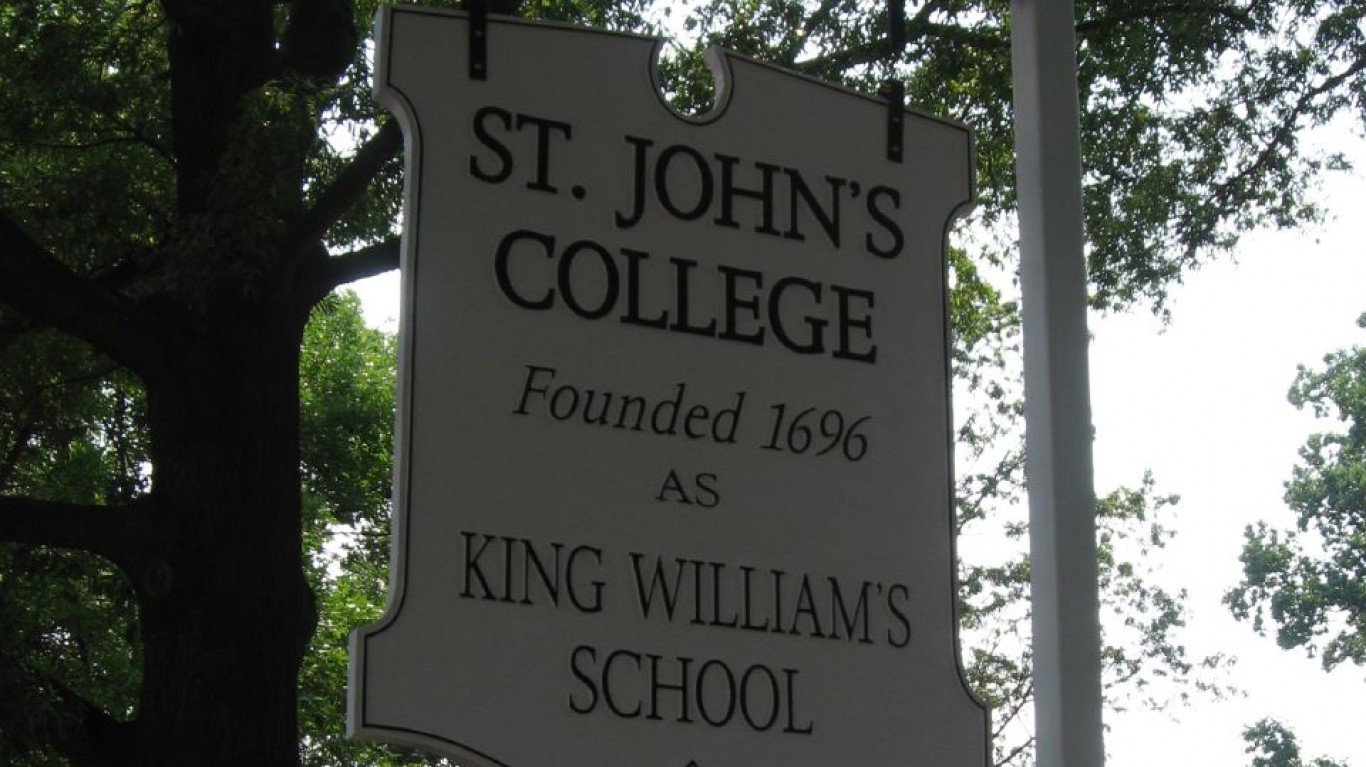
 24/7 Wall St.
24/7 Wall St.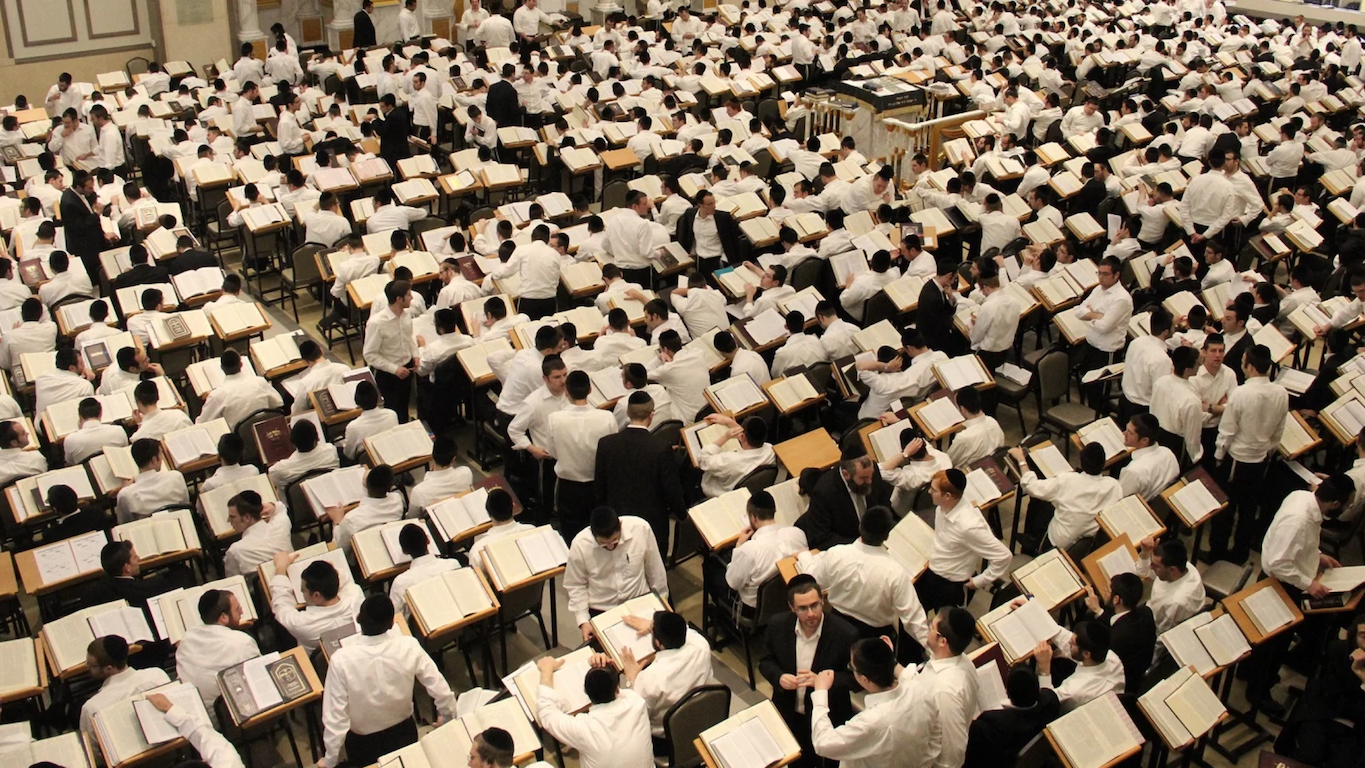 24/7 Wall St.
24/7 Wall St.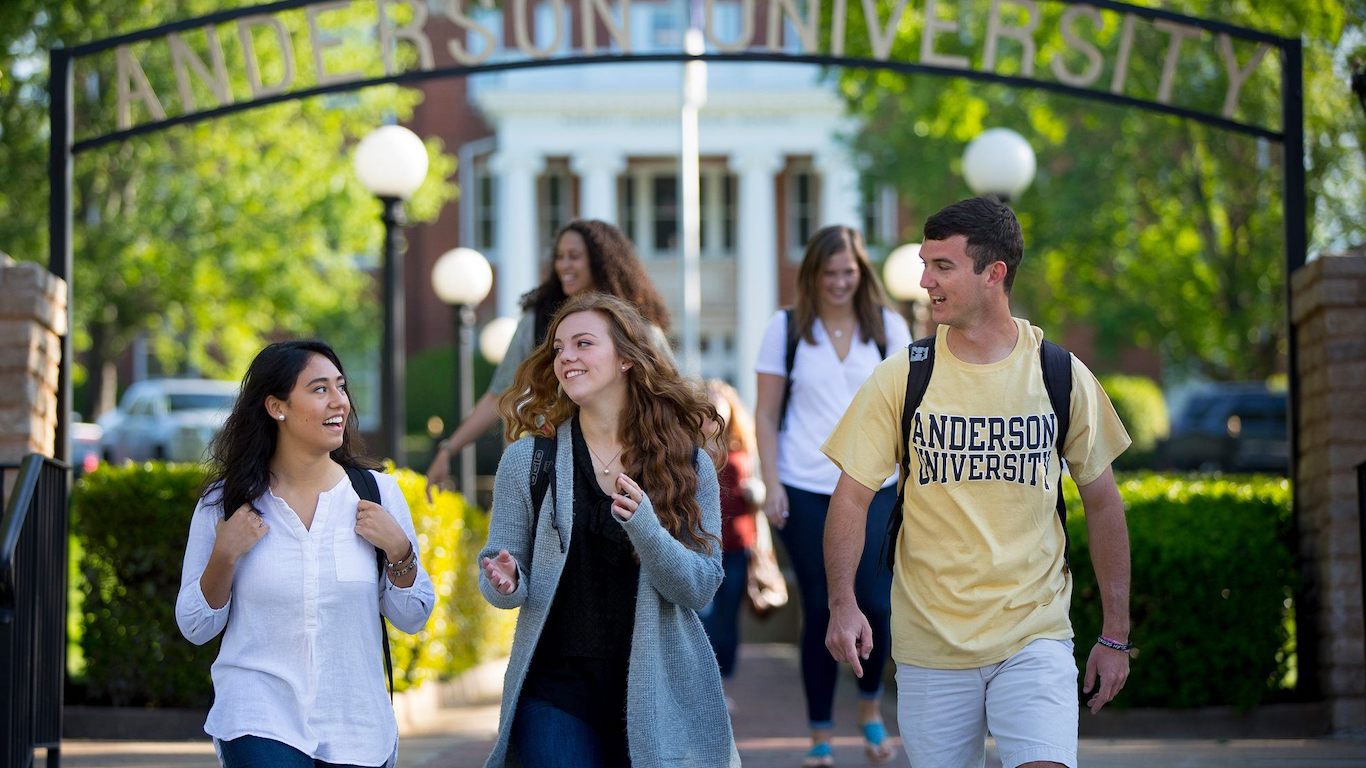 24/7 Wall St.
24/7 Wall St.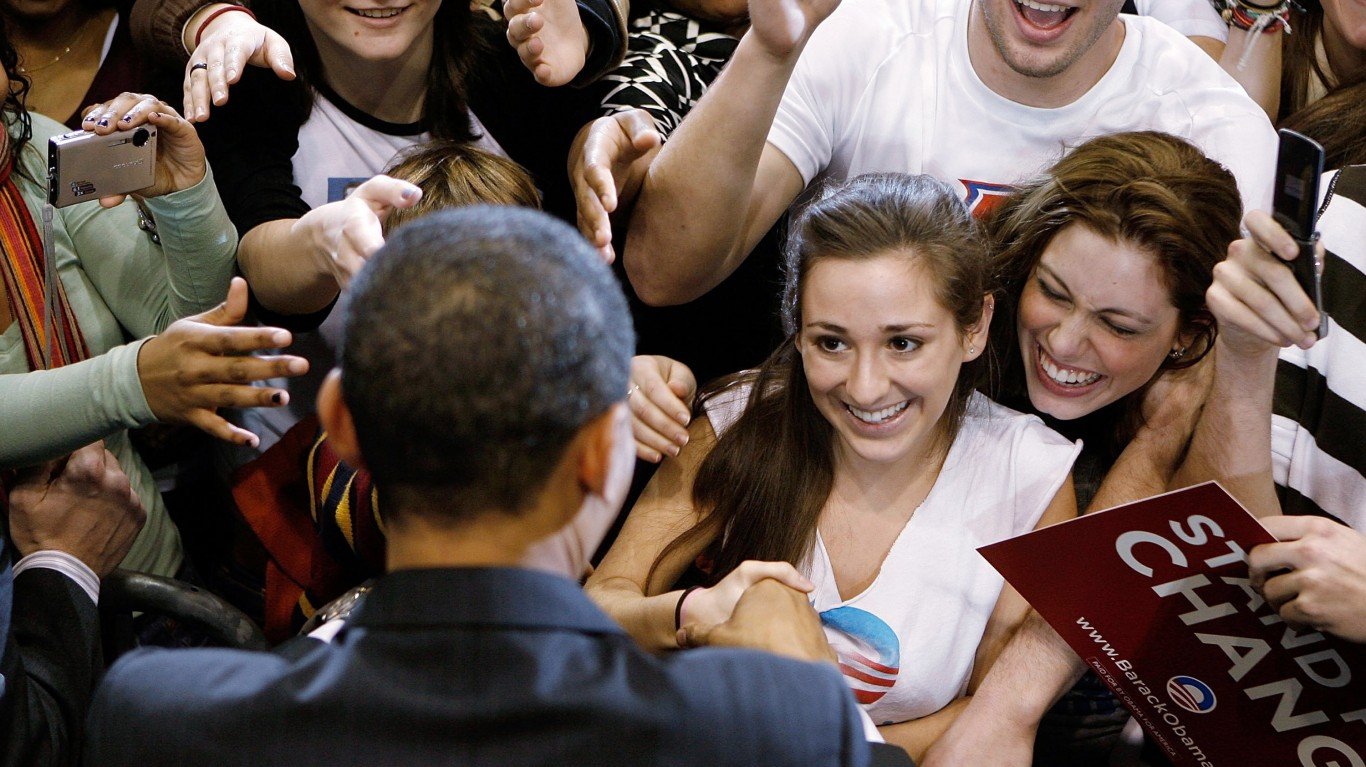 24/7 Wall St.
24/7 Wall St.